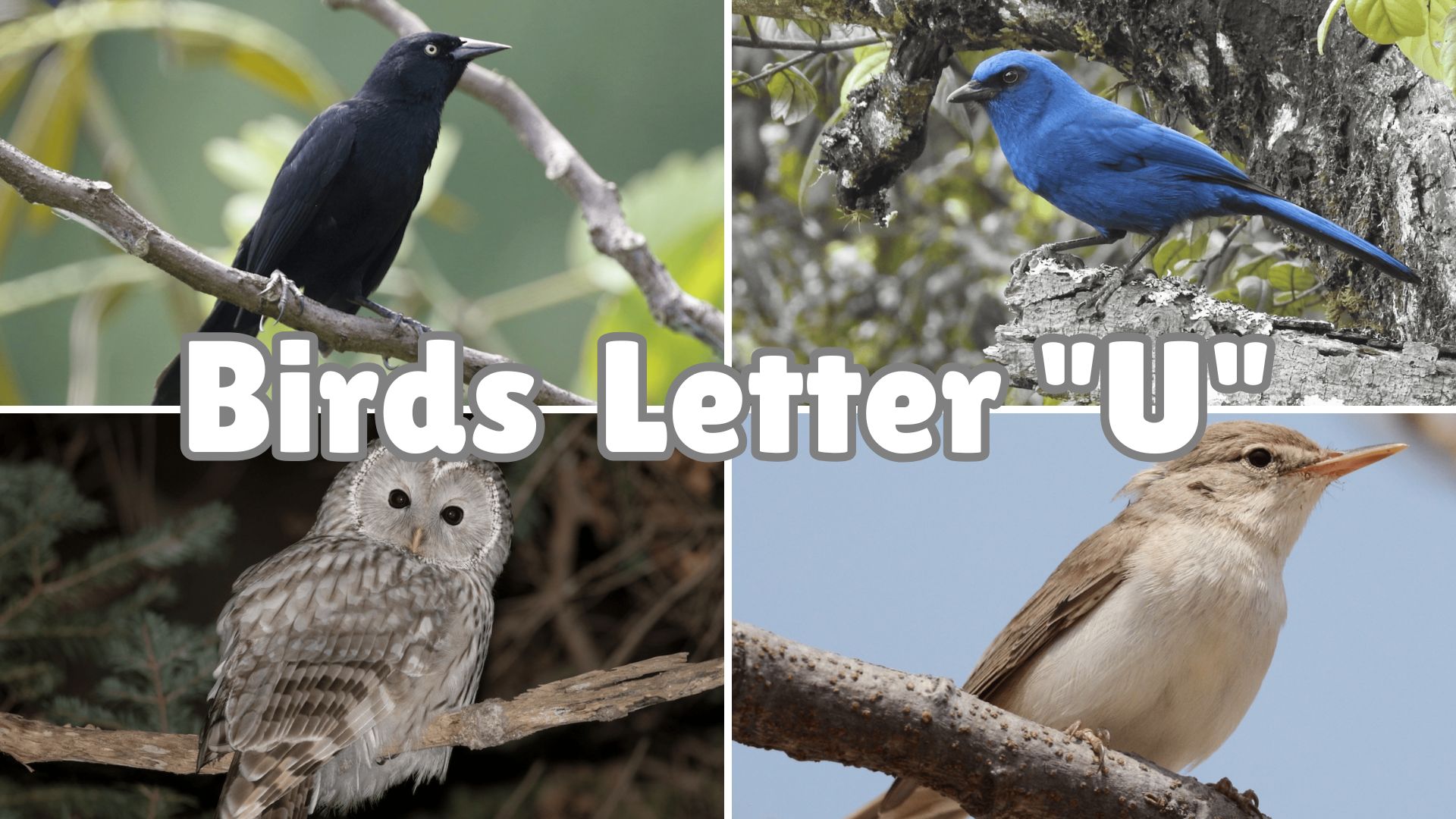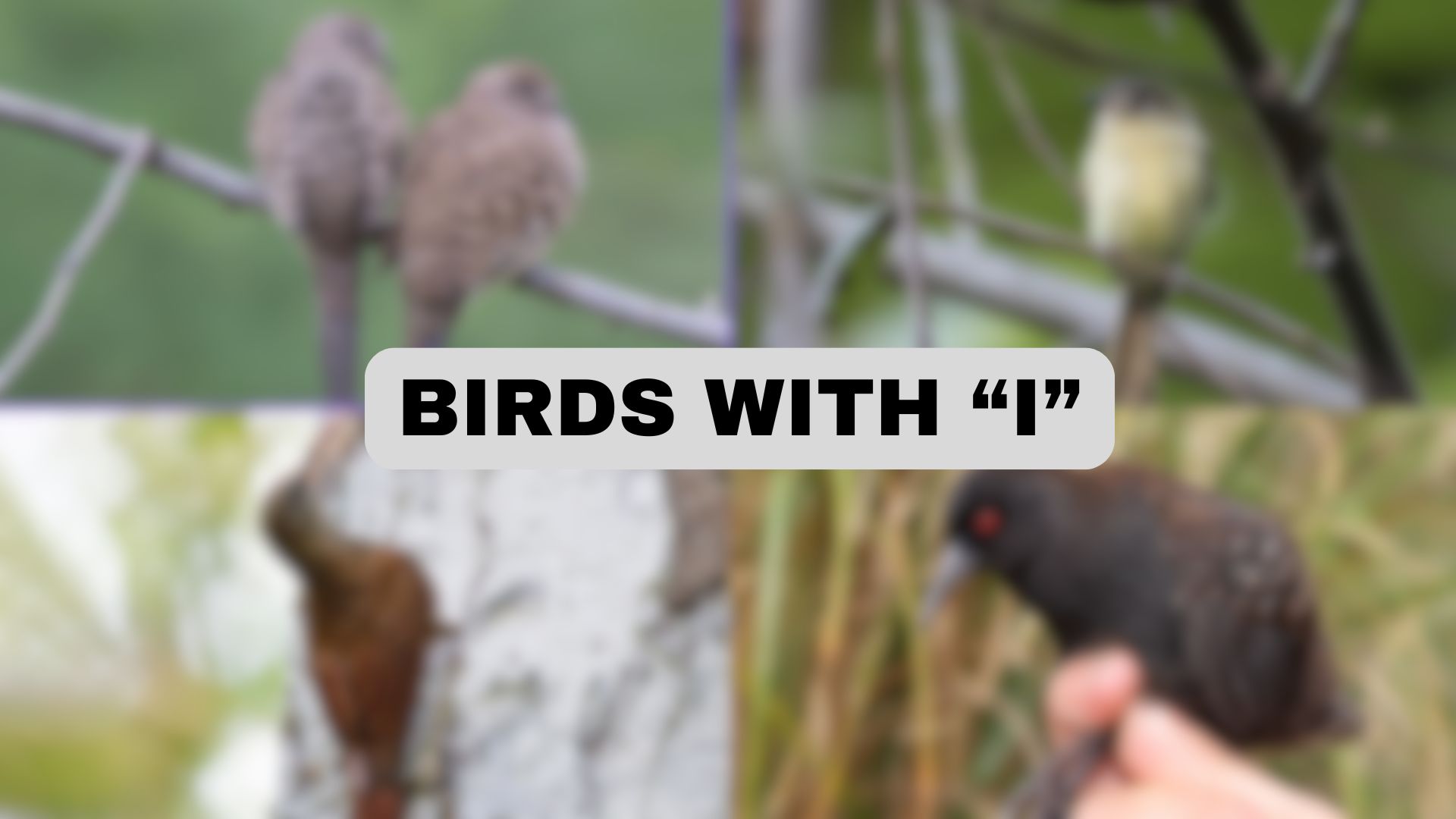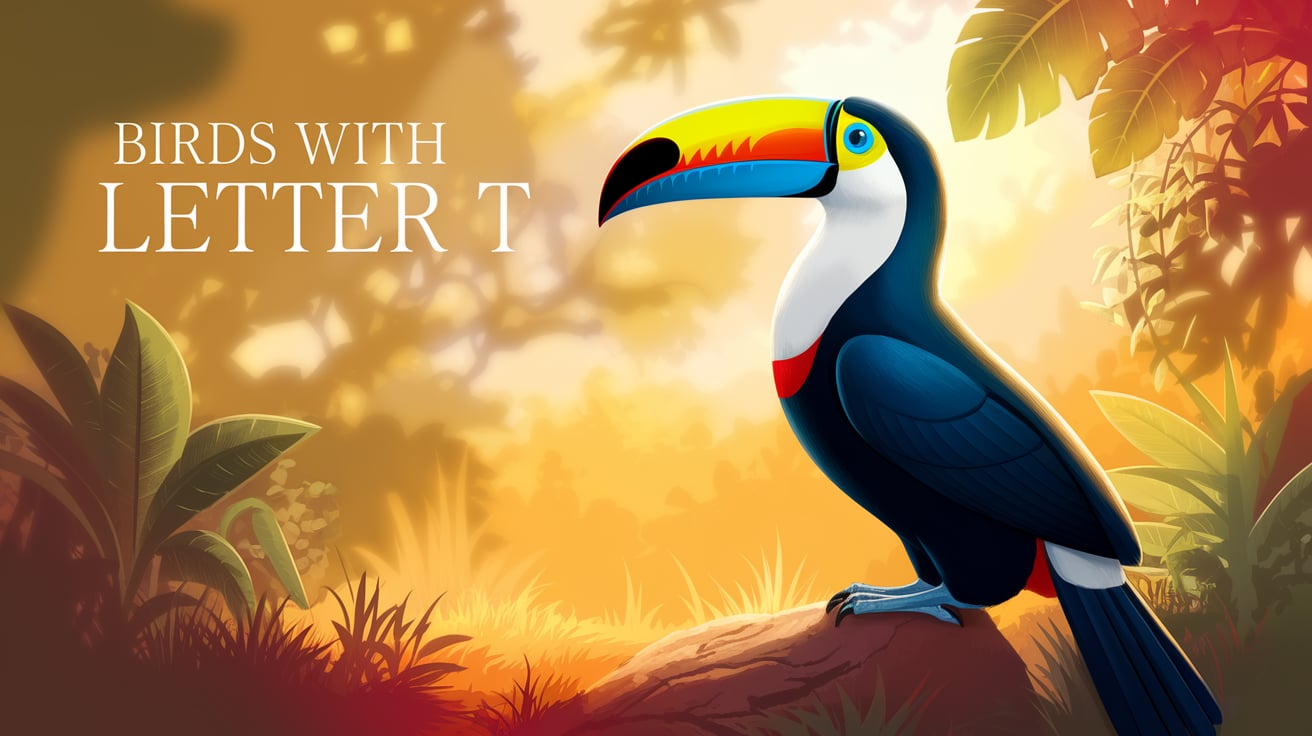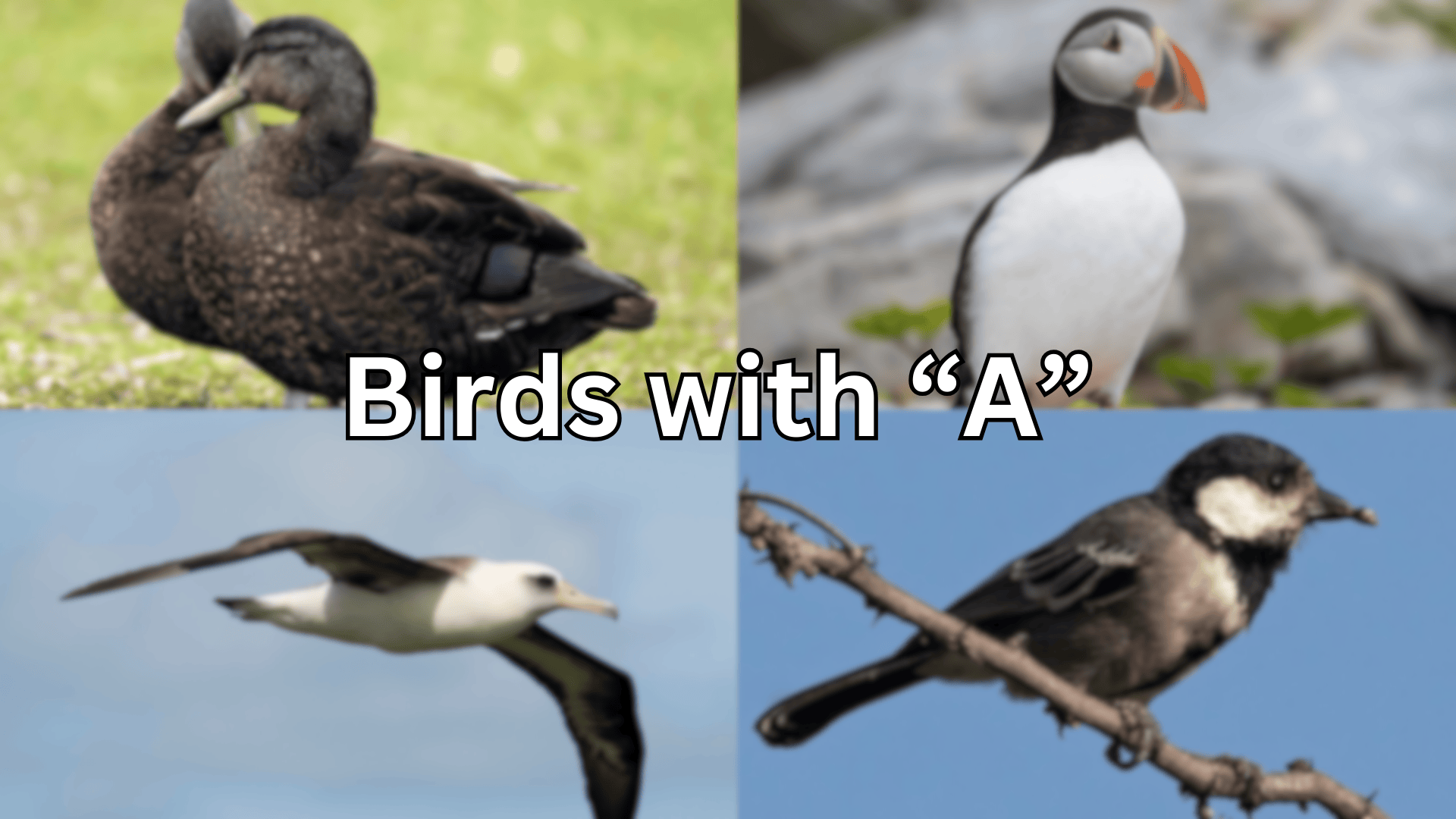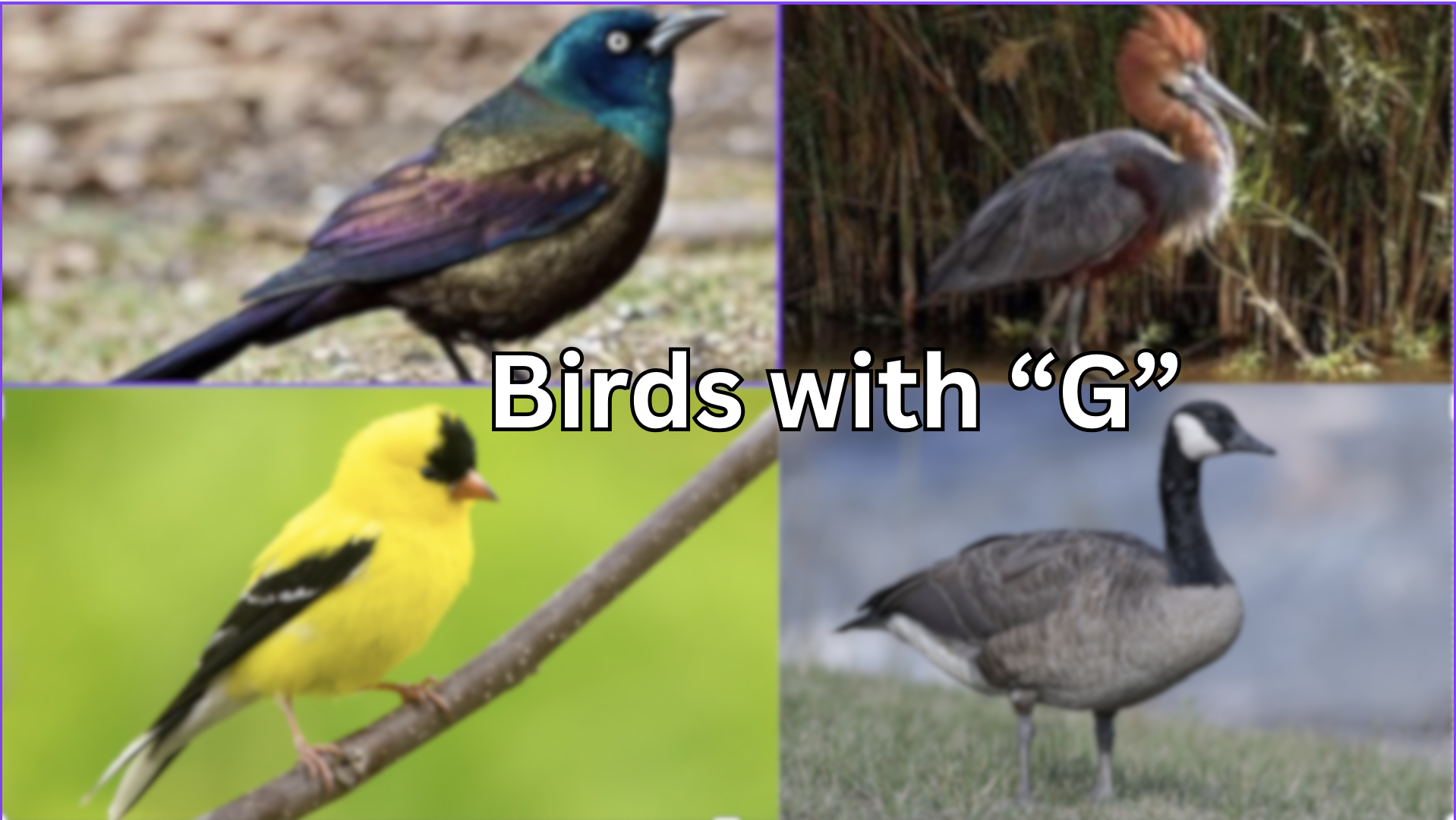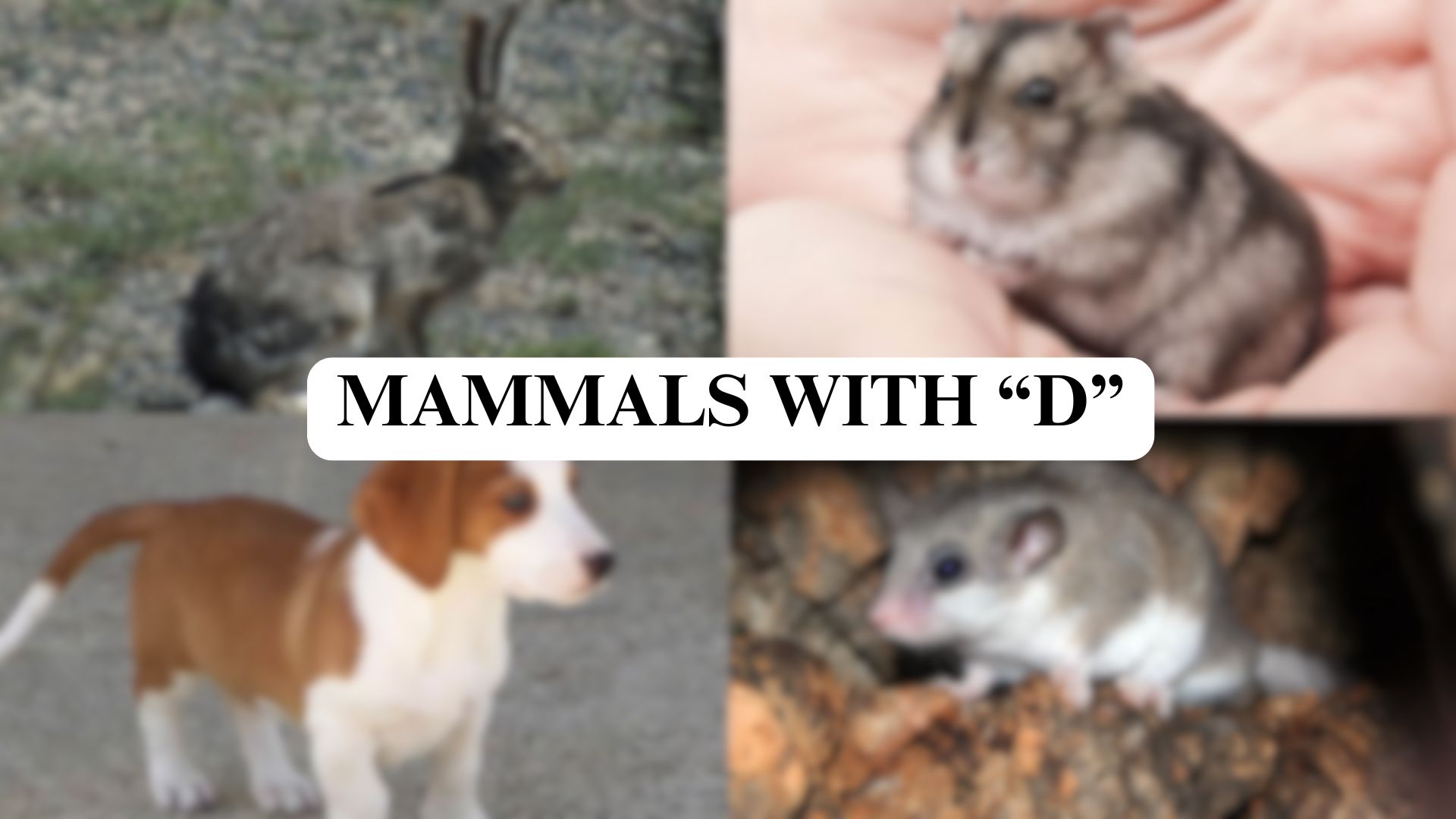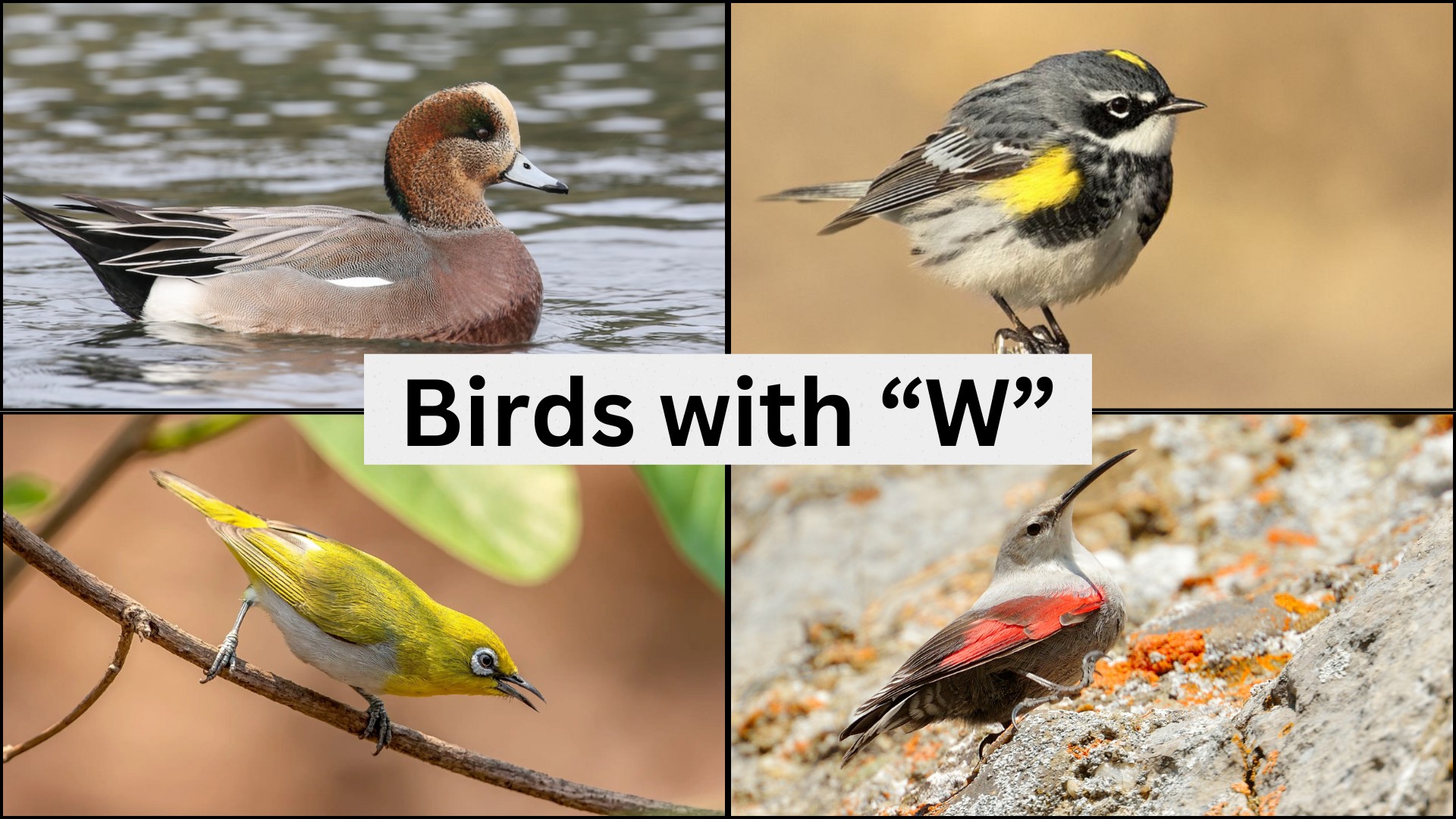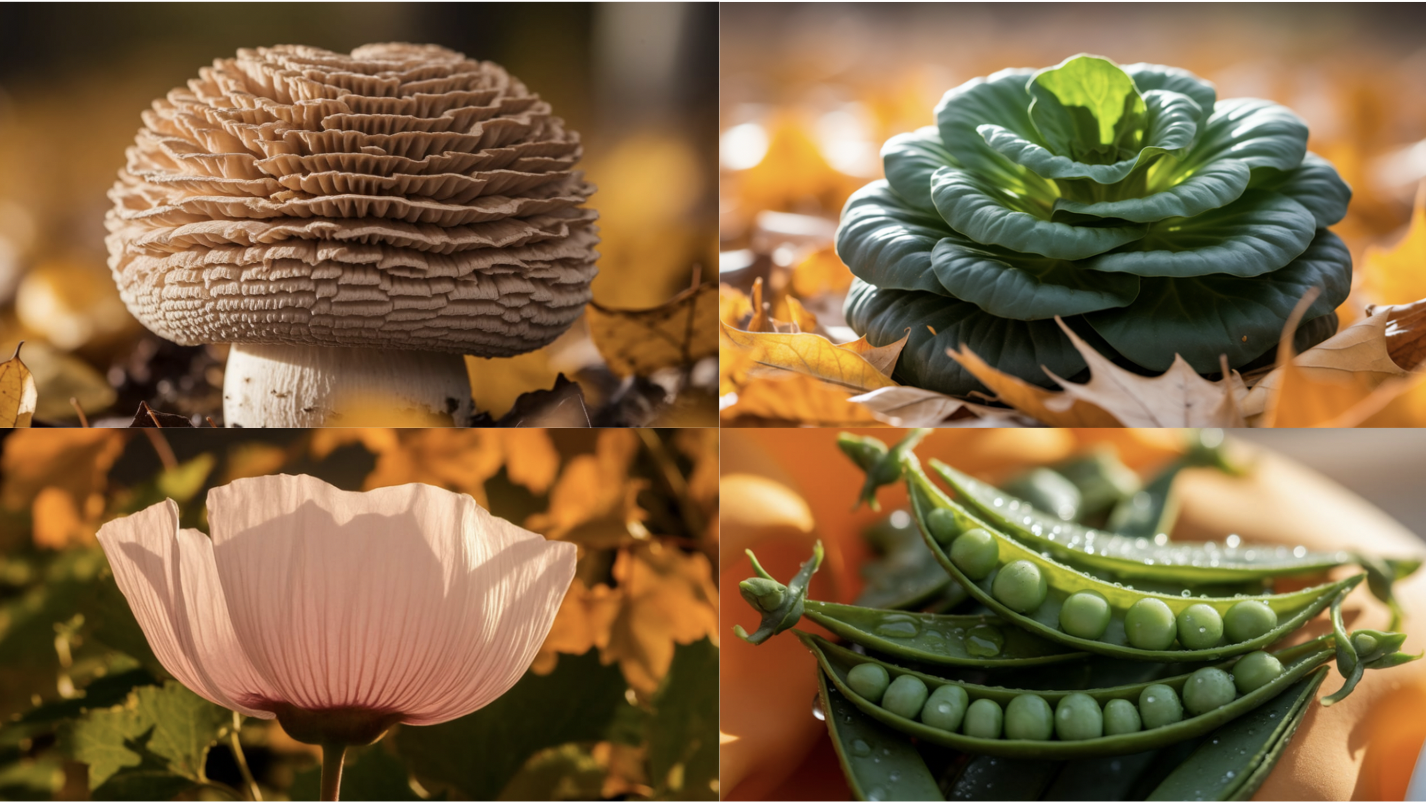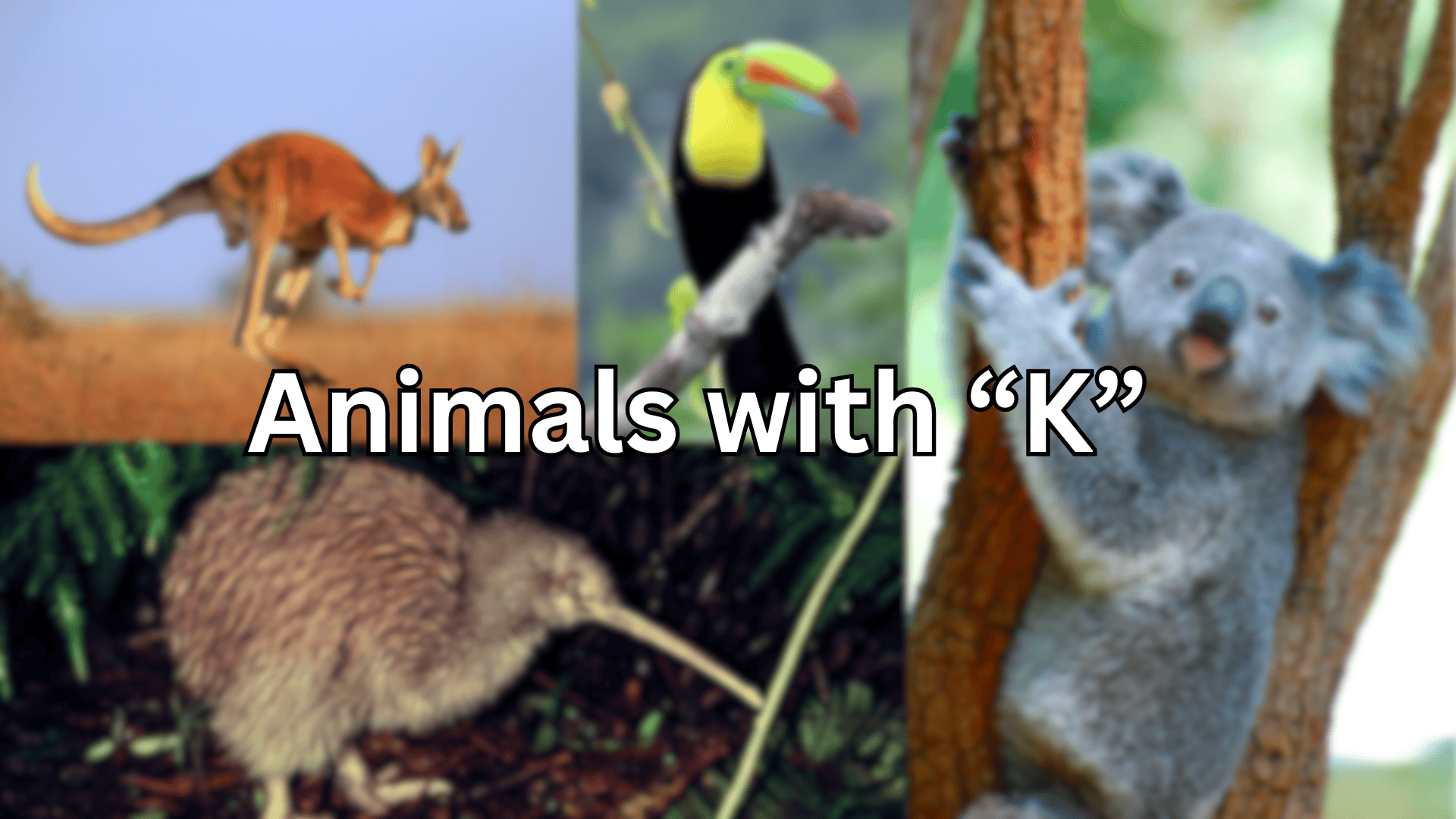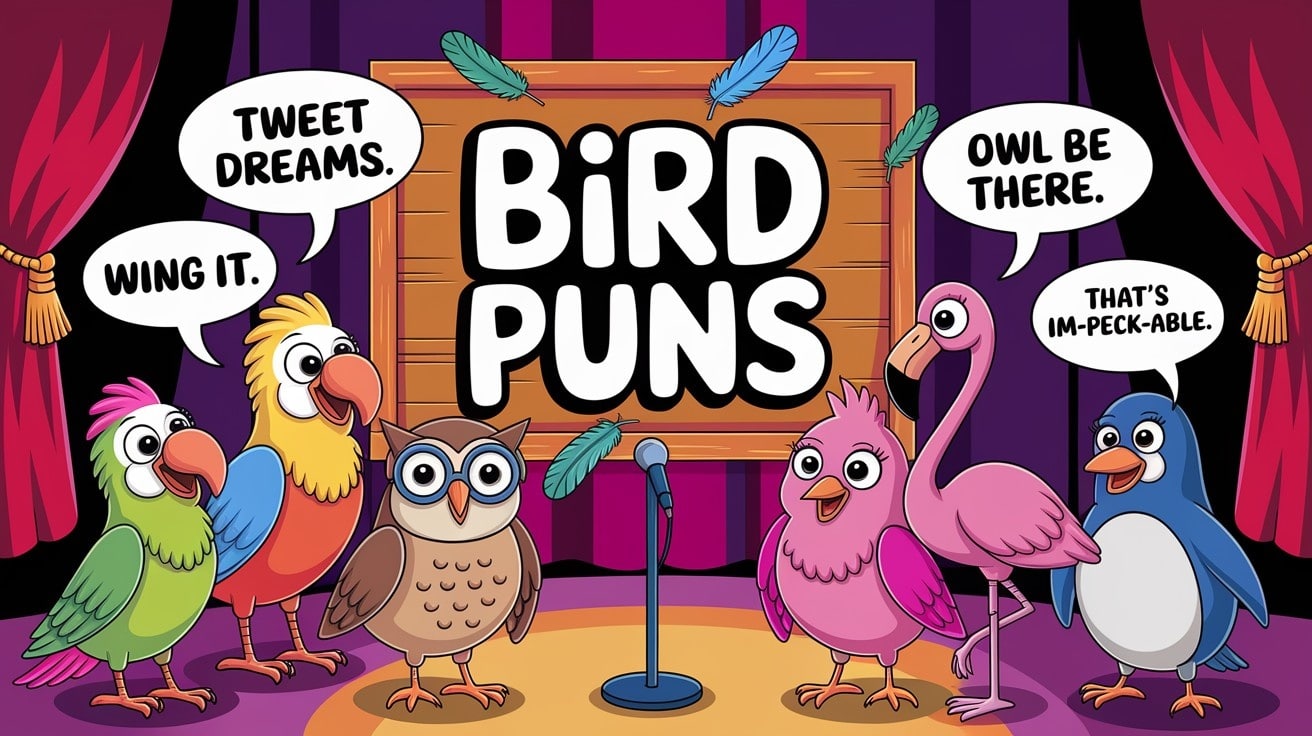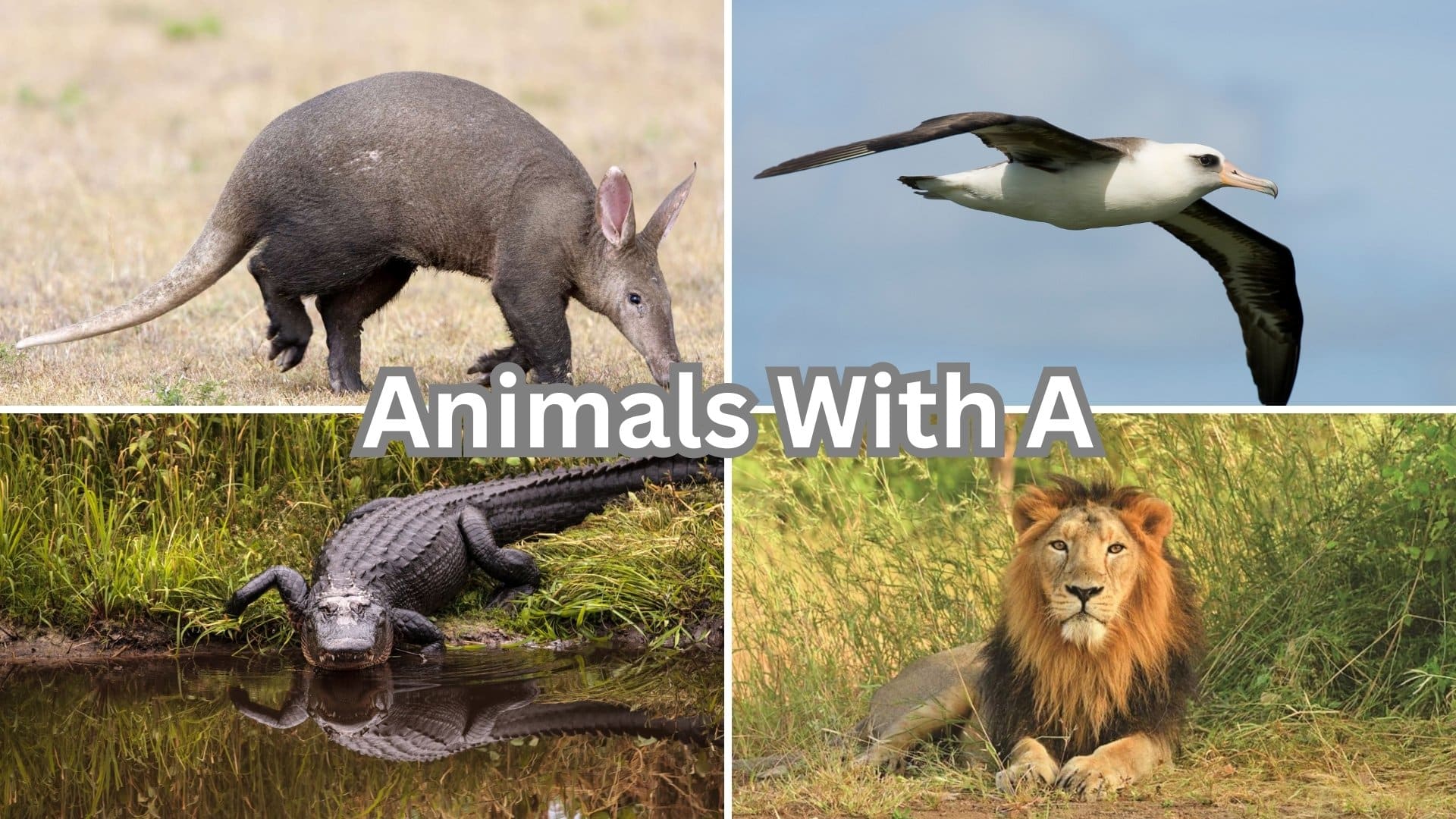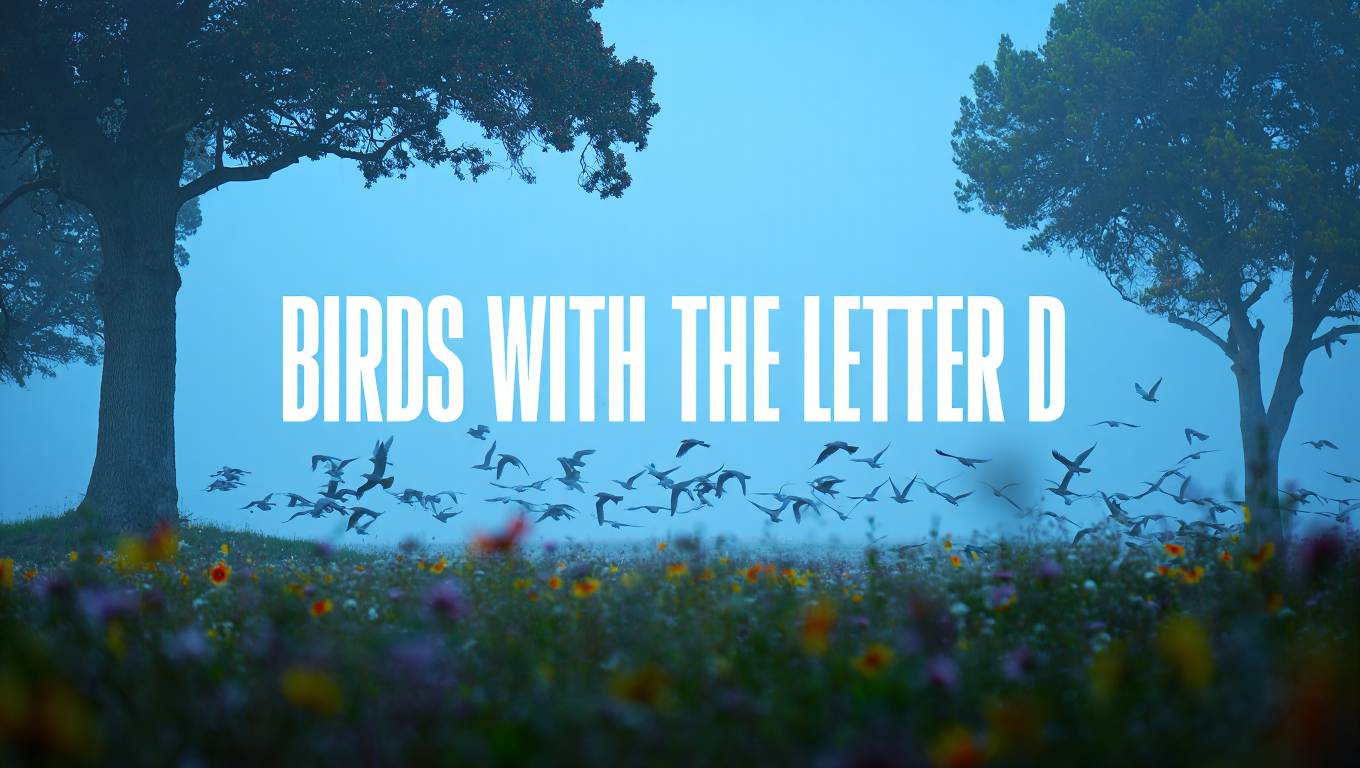
Welcome to our “Distinctive Birds with D” collection – a comprehensive lookbook to our planet’s feathered wonders that begin with the letter D!
This collection provides essential information about habitat, scientific classification, feeding habits, and vocalizations—plus mesmerizing fun facts that highlight the diversity of avian life. Are you a birdwatcher, a student, or simply curious about wildlife?
Join us as we explore wetlands, forests, deserts, and mountains to find the extraordinary adaptations and behaviors of these “D” birds.
A List of Commonly-Spotted Birds With ‘D’
1. Dalmatian Pelican
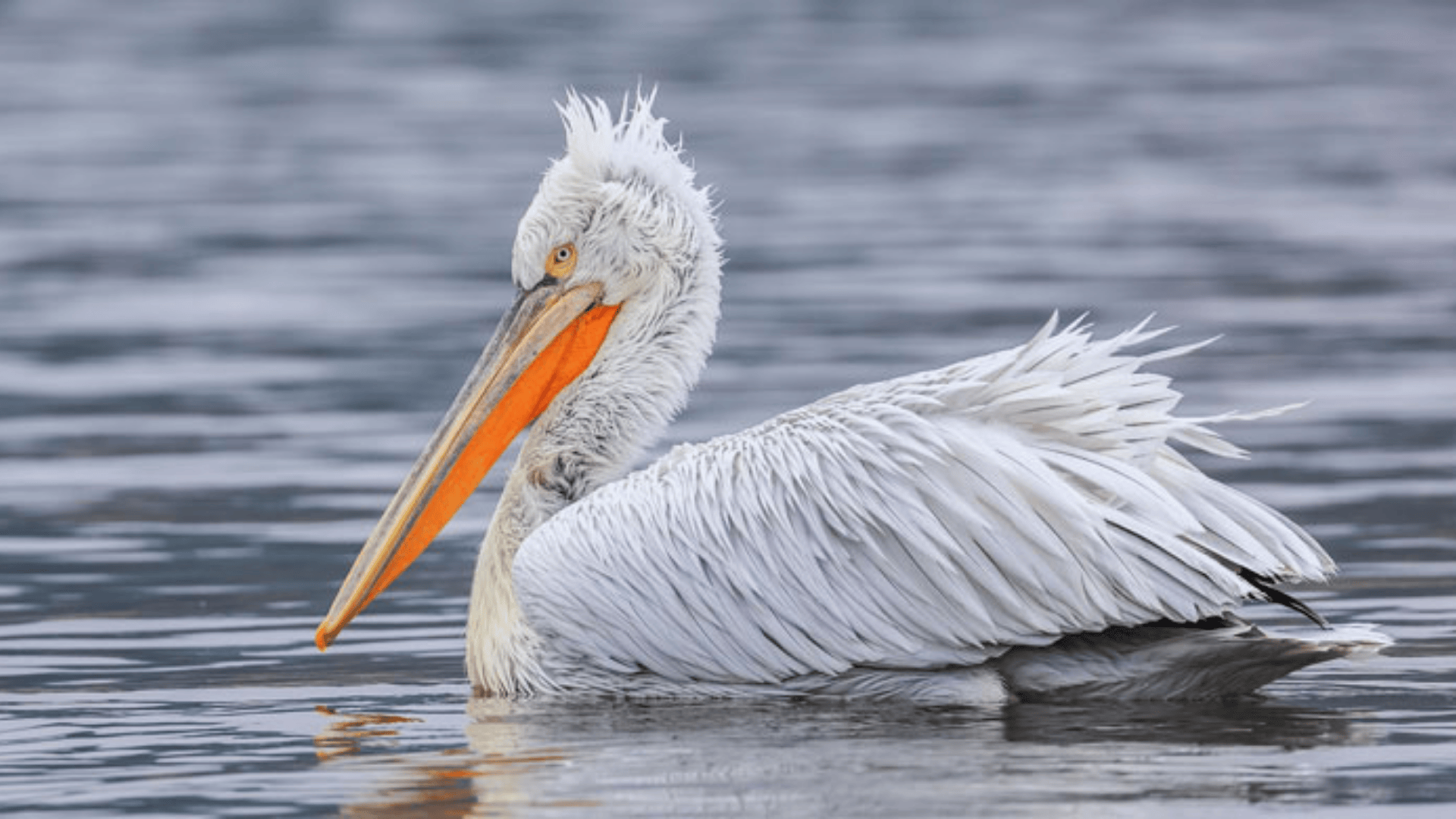
The Dalmatian Pelican is one of the largest freshwater birds, measuring around 160–183 cm in length with a wingspan of up to 3.5 meters. It has silvery-white plumage, a curly nape crest, and a massive orange-red pouch during breeding season.
-
Region of Habitat: Southeastern Europe to Central Asia; prefers wetlands, lakes, and deltas.
-
Scientific Name:Pelecanus crispus
-
Feeding Habits: Feeds mainly on fish, using cooperative hunting methods in shallow waters.
-
What Sound They Make: Generally silent; may produce low grunts or hissing near nests.
Fun Facts:
The Dalmatian Pelican is heavier than any other flying bird. It uses its large throat pouch, similar to a fishing net, to scoop up fish.
2. Damara Tern
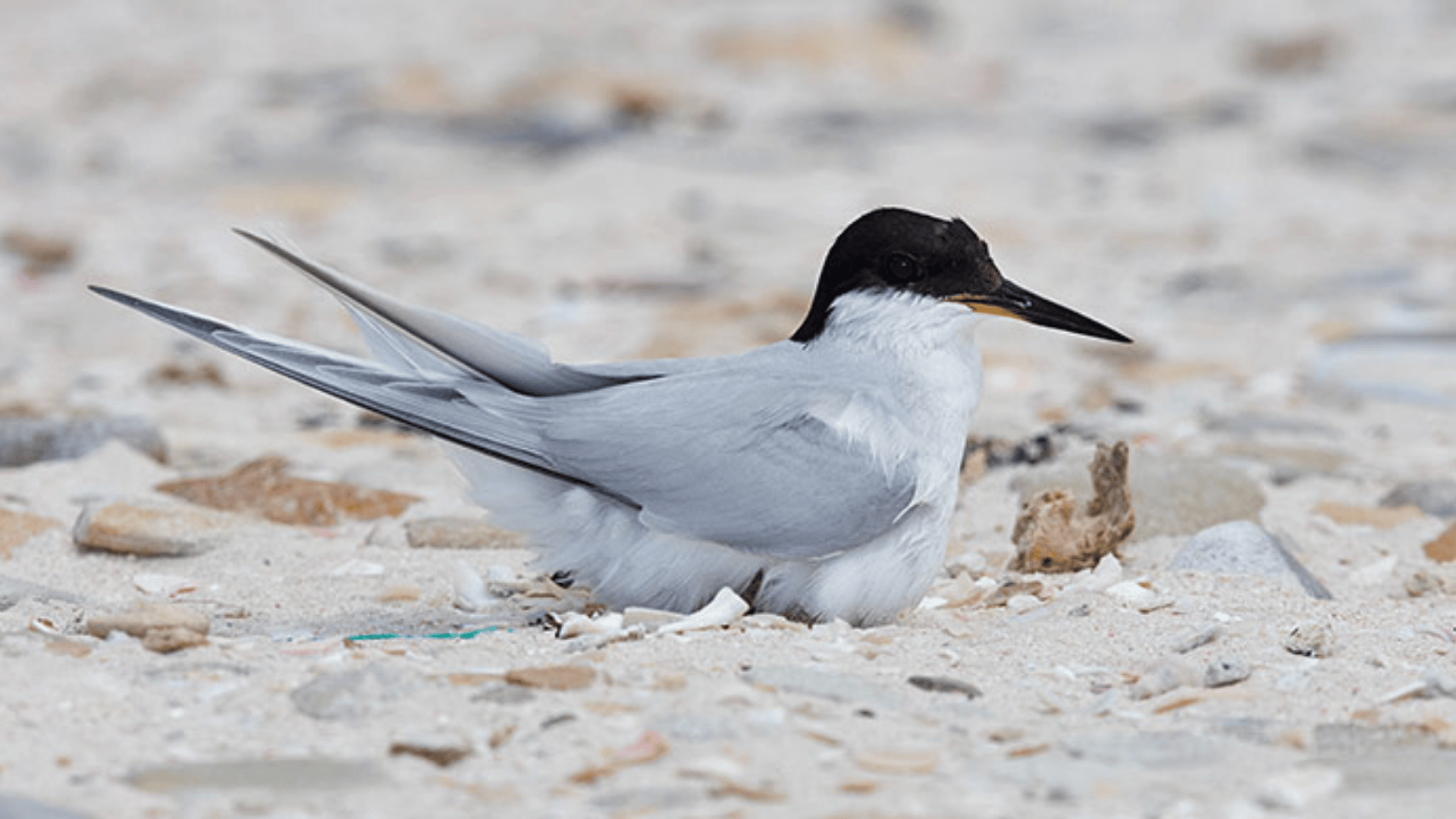
A small, elegant seabird, the Damara Tern measures about 23–25 cm long with pale gray upperparts, a white underside, and a black cap on its head.
-
Region of Habitat: Southwestern coast of Africa, mainly Namibia and Angola; breeds in coastal deserts.
-
Scientific Name:Sternula balaenarum
-
Feeding Habits: Catches small fish and aquatic invertebrates by plunge-diving into shallow coastal waters.
-
What Sound They Make: Emits high-pitched, squeaky calls during flight and while feeding.
Fun Facts:
It nests directly on bare sand with no nest structure. The Damara Tern is one of the smallest terns in the world.
3. Darjeeling Woodpecker
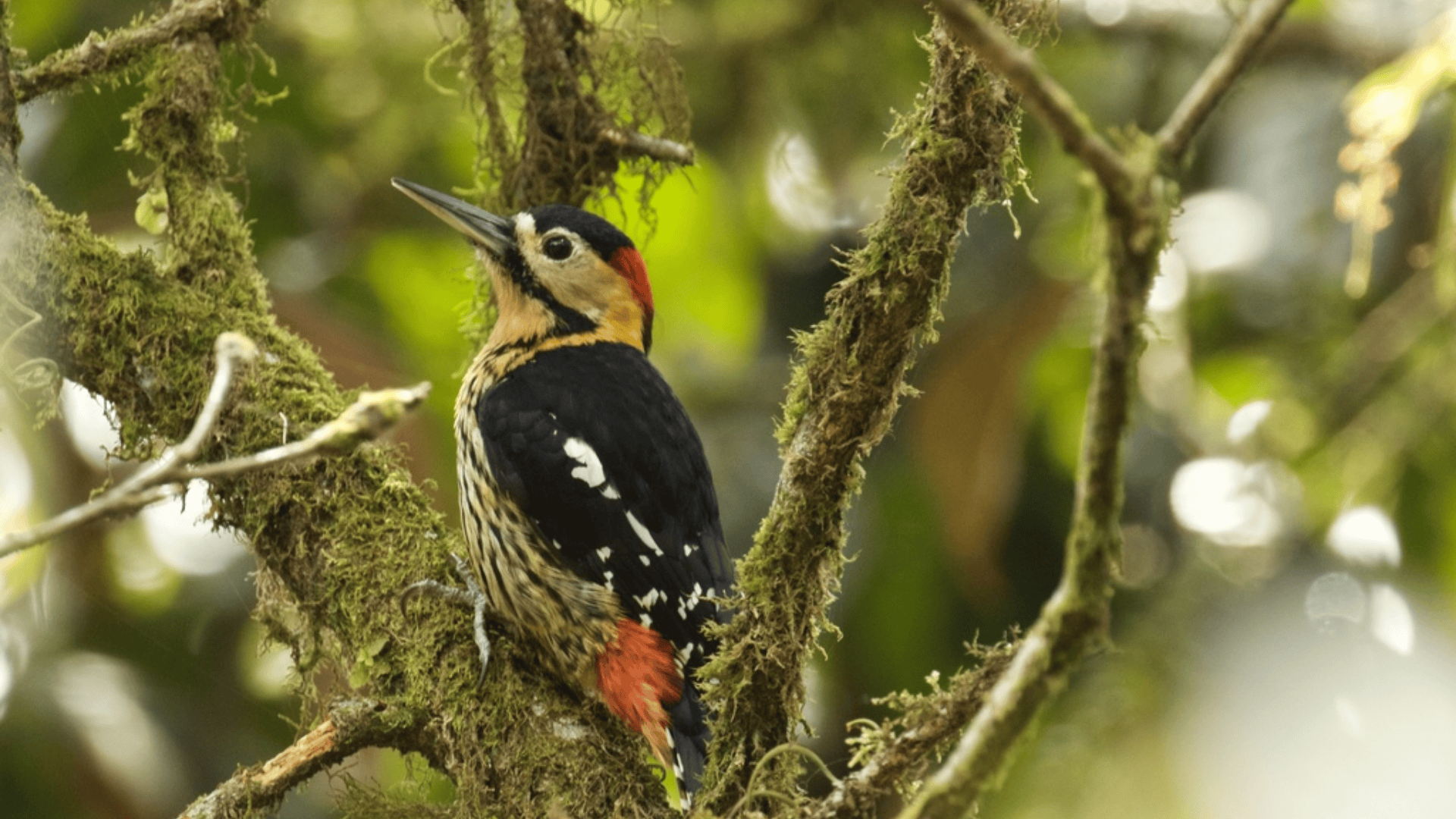
This medium-sized woodpecker has black and white plumage with a red crown in males. It’s about 20–23 cm long and often seen scaling tree trunks in Himalayan forests.
-
Region of Habitat: Himalayan regions of northern India, Nepal, and Bhutan.
-
Scientific Name:Dendrocopos darjellensis
-
Feeding Habits: Feeds on insects, larvae, and sometimes fruit and sap; excavates bark and wood.
-
What Sound They Make: Makes loud drumming sounds and sharp “kick” calls.
Fun Facts:
Its drumming serves as both a communication tool and a way to forage. It has shock-absorbing tissue in its skull to prevent brain damage while pecking.
4. Dark Chanting Goshawk
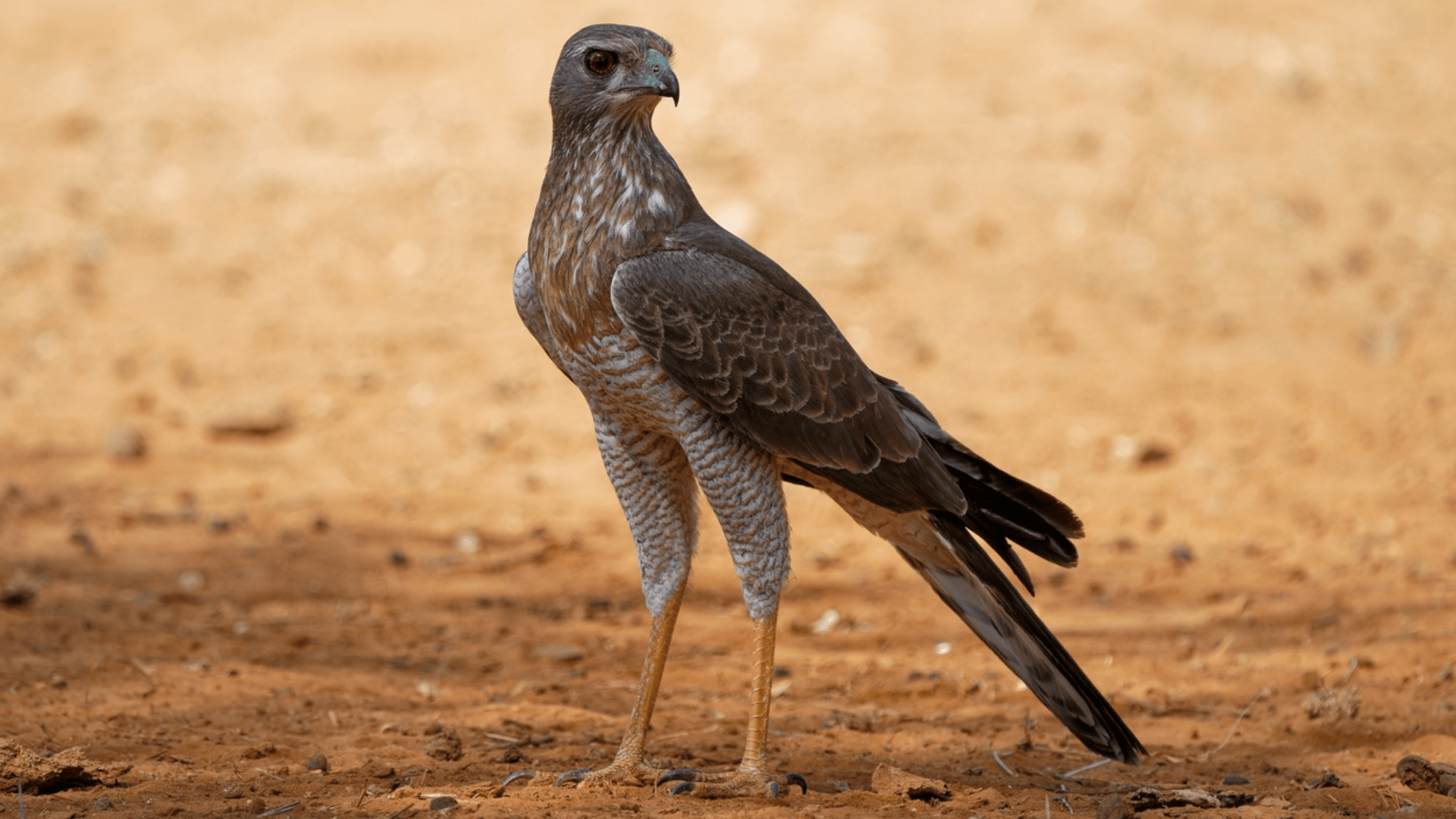
This striking raptor has a grey head and chest, orange-red legs and cere, and black-tipped wings. It reaches about 55–65 cm in length.
-
Region of Habitat: Sub-Saharan Africa; found in savannas, woodlands, and open plains.
-
Scientific Name:Melierax metabates
-
Feeding Habits: Hunts reptiles, birds, small mammals, and large insects from perches.
-
What Sound They Make: Repeated “pee-yoo” whistles, especially during territorial displays.
Fun Facts:
Known for its unique walking hunt technique on the ground. Often seen perched conspicuously on utility poles or trees.
5. Dartford Warbler
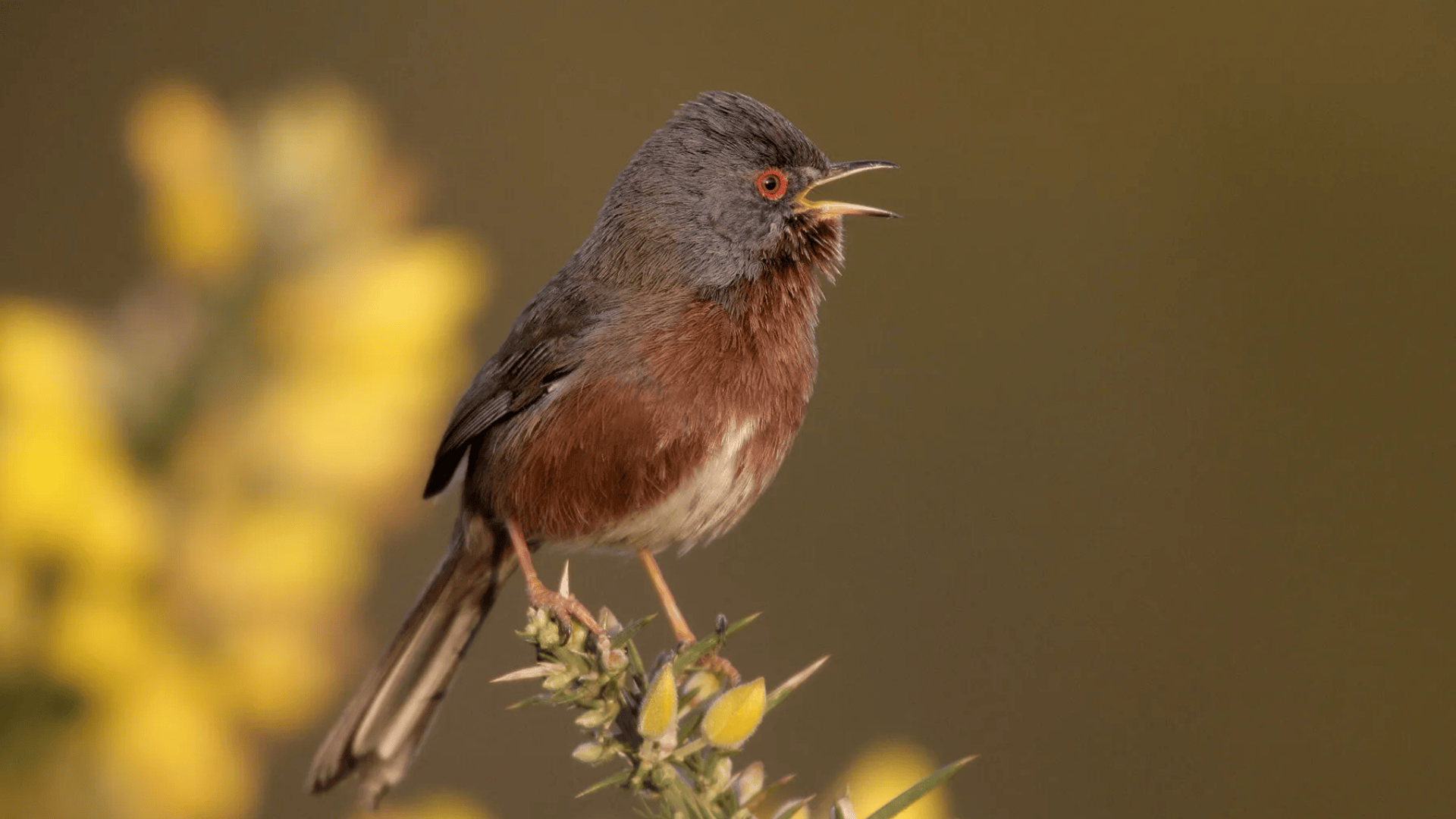
A tiny, long-tailed warbler about 13 cm in length with a reddish breast and slate-gray back. It’s known for its skulking behavior in low vegetation.
-
Region of Habitat: Western Europe and North Africa; prefers heathlands and shrubby habitats.
-
Scientific Name:Curruca undata
-
Feeding Habits: Eats insects and spiders, foraging in low shrubs and ground vegetation.
-
What Sound They Make: Fast, scratchy warbling song with sharp call notes.
Fun Facts:
Dartford Warblers are non-migratory and highly sensitive to cold winters. Once nearly extinct in the UK, populations have recovered due to conservation efforts.
6. Daurian Redstart
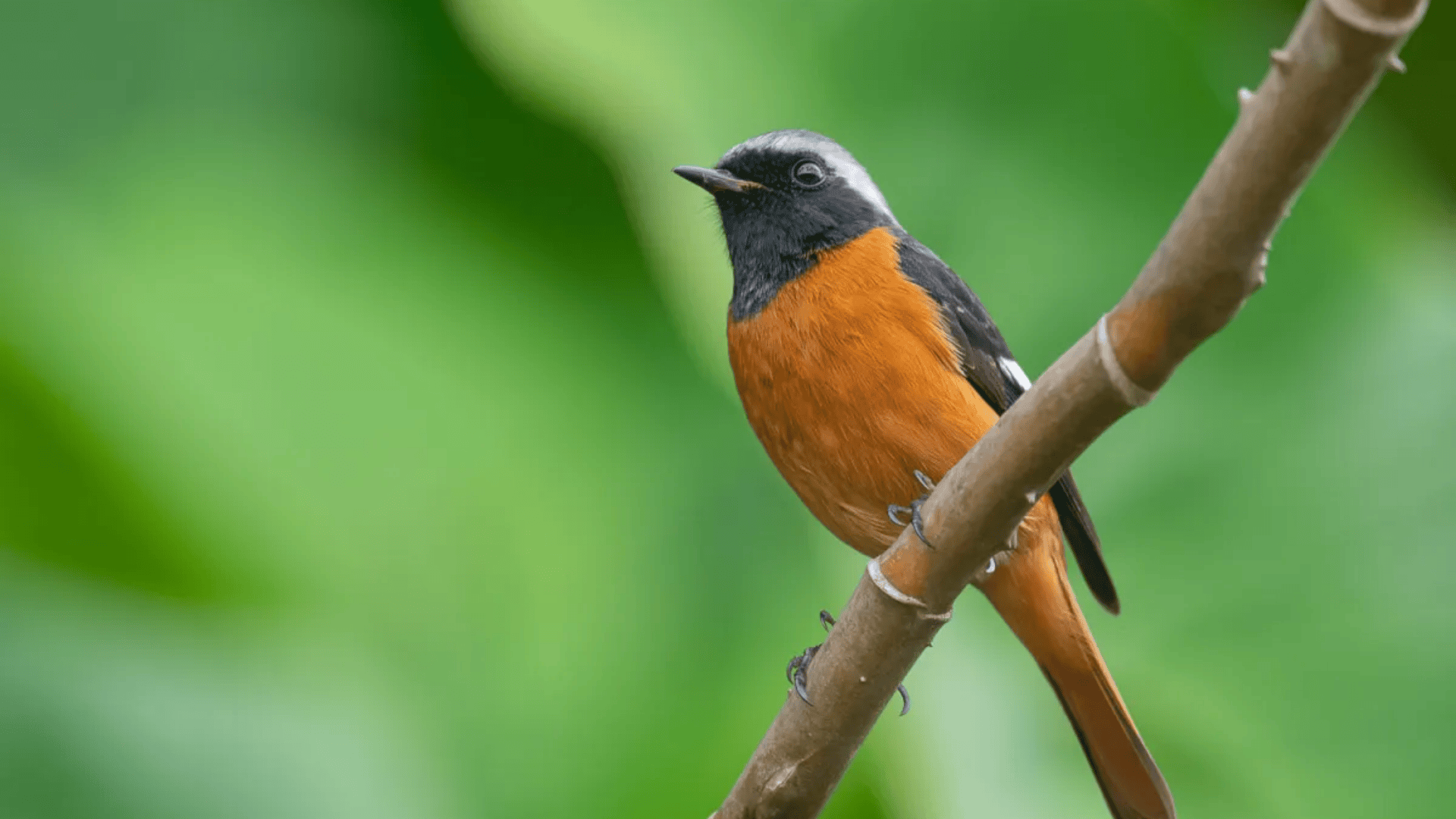
A small passerine bird, the male has a striking orange belly and black face with a white wing patch. Females are more subdued in color.
-
Region of Habitat: East Asia; breeds in Siberia, Mongolia, and China; winters in Southeast Asia and Japan.
-
Scientific Name:Phoenicurus auroreus
-
Feeding Habits: Feeds on insects and berries, often seen darting out to catch flying prey.
-
What Sound They Make: Clear, whistled “twee-twee” and mechanical clicking notes.
Fun Facts:
Males often flick their tails to show off their bright plumage during courtship. Considered a lucky bird in Japanese culture.
7. Desert Lark
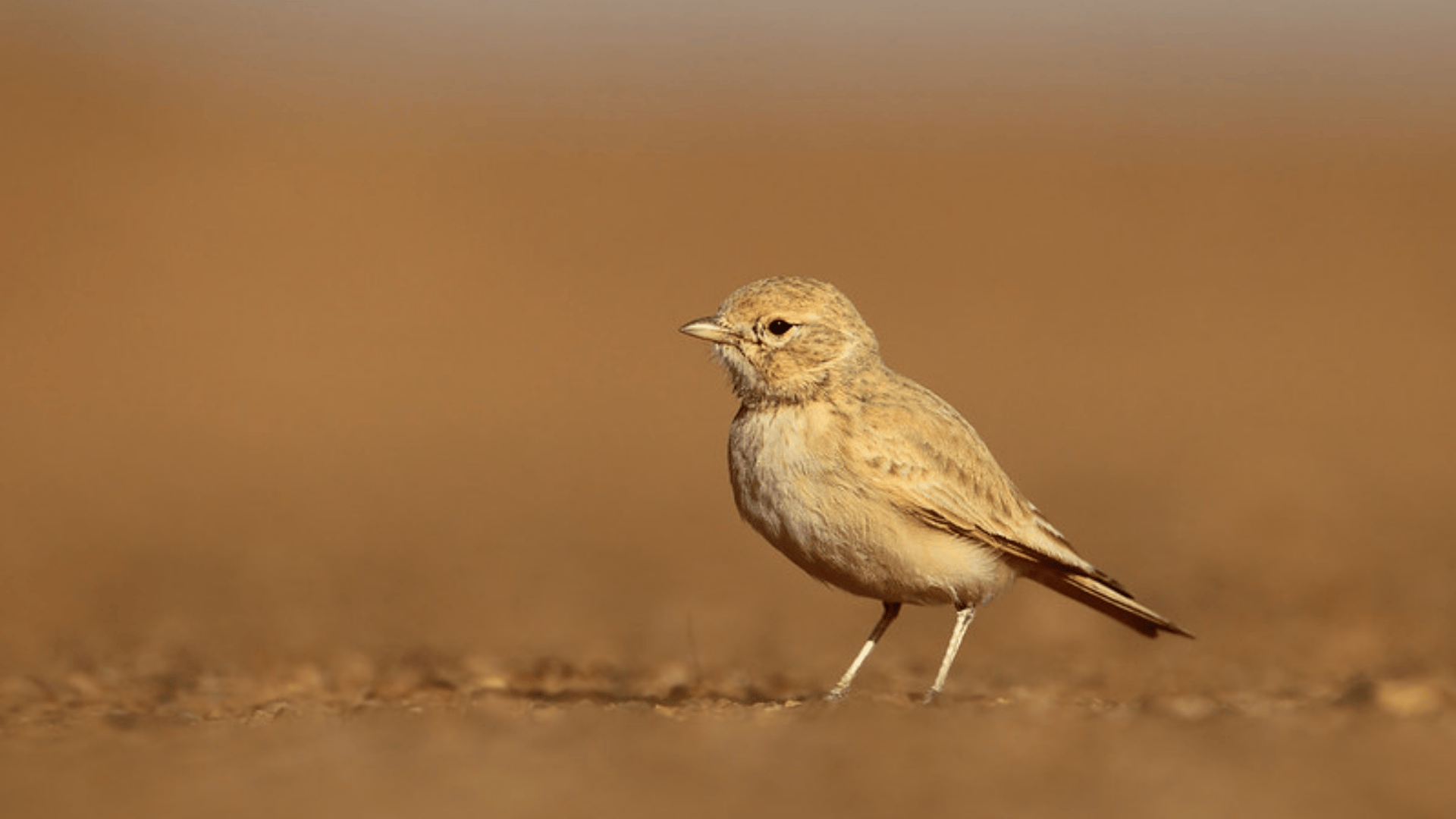
This plain-looking lark has sandy-gray feathers that blend with arid environments. It is about 15–17 cm long and has a slightly curved bill.
-
Region of Habitat: North Africa and the Middle East; lives in deserts, rocky hillsides, and semi-arid plains.
-
Scientific Name:Ammomanes deserti
-
Feeding Habits: Eats seeds, insects, and small invertebrates, foraging on the ground.
-
What Sound They Make: Melodic, fluty whistles, often sung from rocks or during flight.
Fun Facts:
Desert Larks can go long periods without drinking water. Their feather colors often match the local soil color.
8. Desert Wheatear
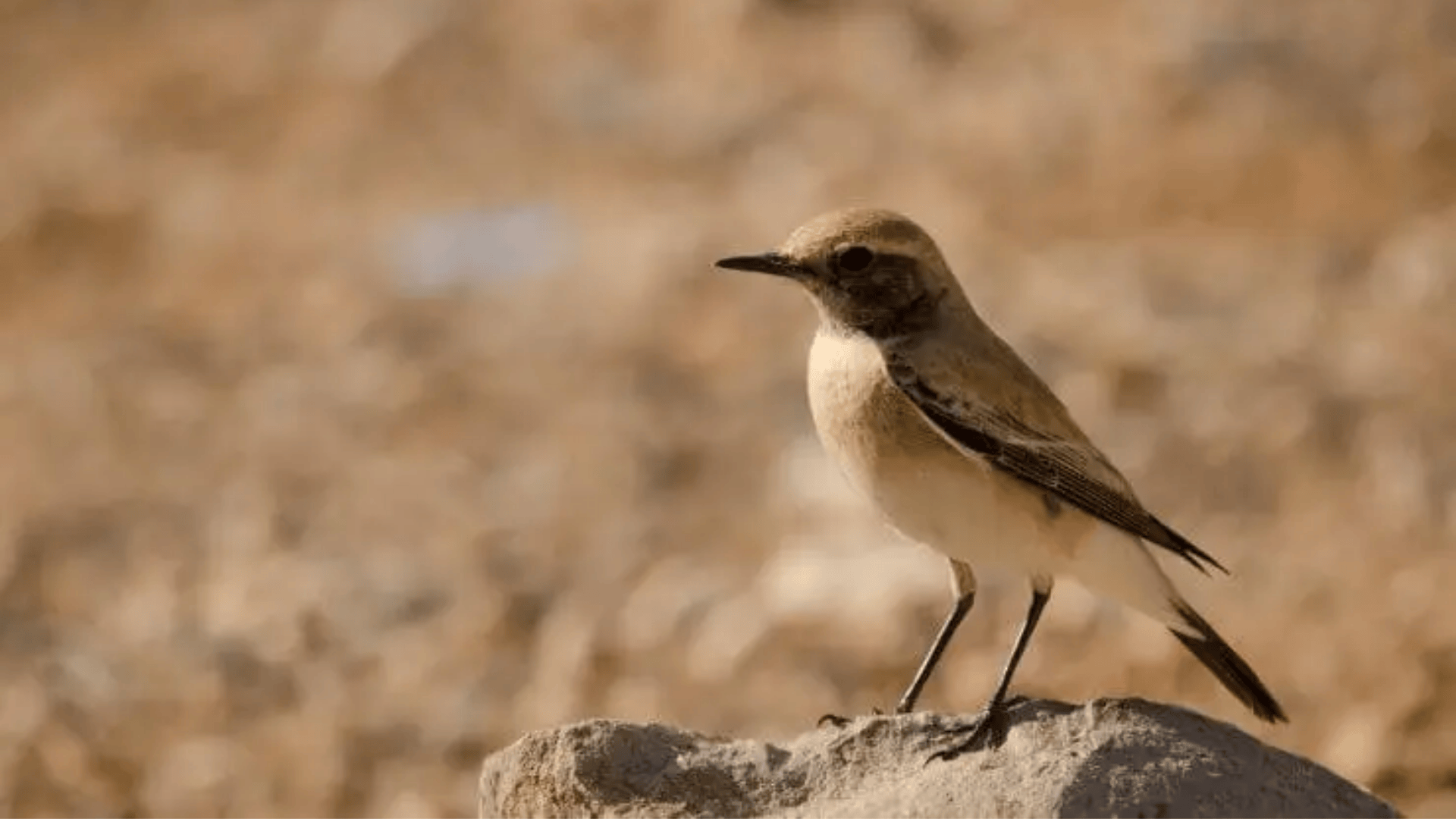
This small, upright perching bird has buff and black plumage with a striking black tail. Males are more vividly colored than females.
-
Region of Habitat: Arid zones of North Africa, Central Asia, and the Middle East.
-
Scientific Name:Oenanthe deserti
-
Feeding Habits: Insectivorous, feeding on ants, beetles, and grasshoppers.
-
What Sound They Make: Sharp “chak-chak” calls and a melodic song during breeding.
Fun Facts:
It frequently bobs and fans its tail while perching. Migratory populations travel long distances between breeding and wintering grounds.
9. Diamond Dove
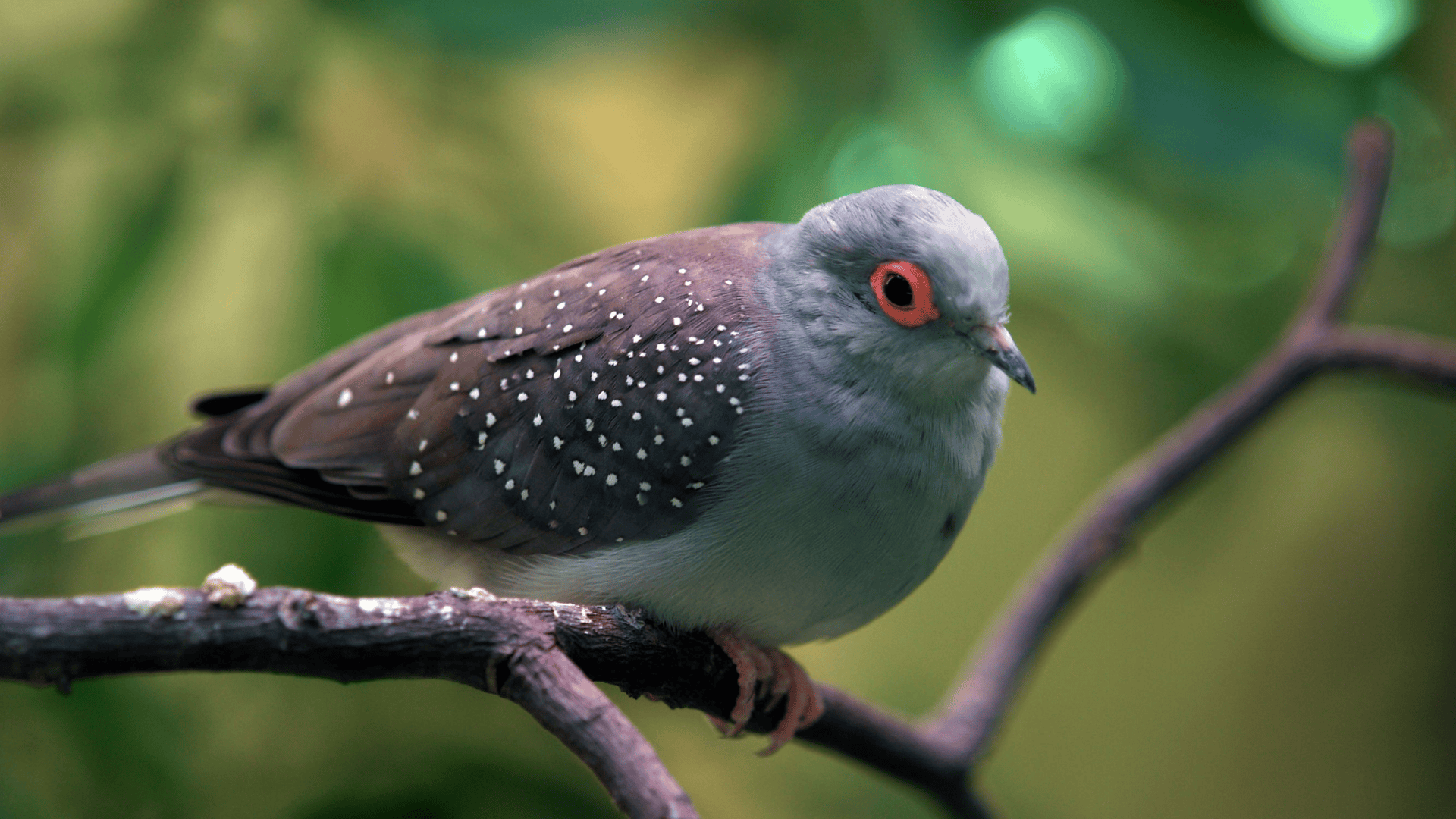
A small dove about 19–21 cm long with a grayish body and distinctive white spots on its wings resembling diamonds.
-
Region of Habitat: Central and northern Australia; common in arid and semi-arid areas.
-
Scientific Name:Geopelia cuneata
-
Feeding Habits: Ground forager; eats grass seeds and small insects.
-
What Sound They Make: Soft, mournful cooing, often in pairs or flocks.
Fun Facts:
Despite its delicate appearance, it thrives in hot, dry climates. Often kept as a pet due to its gentle nature and low maintenance.
10. Dickcissel
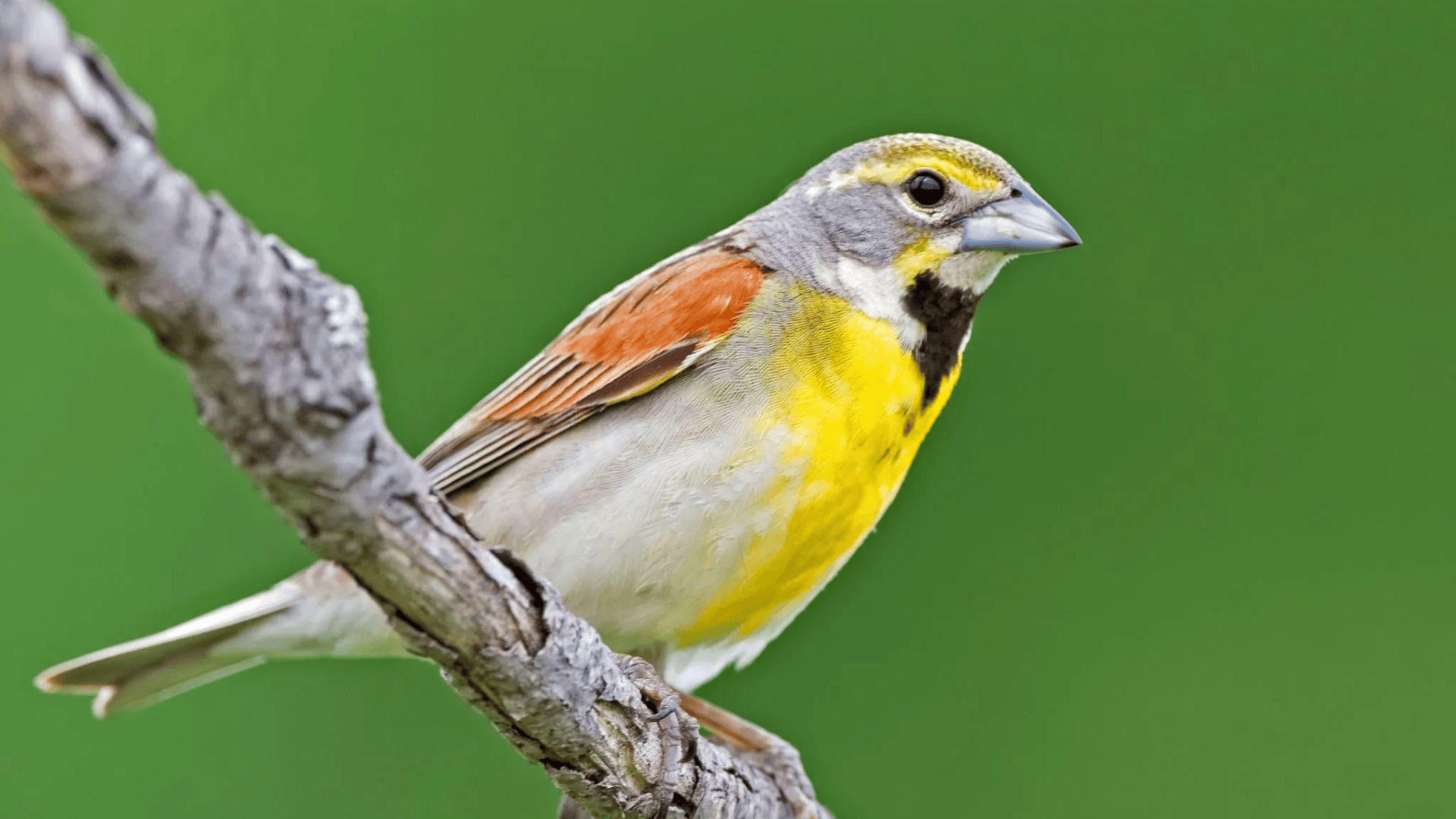
This sparrow-like bird has a thick bill, yellow chest, and black “bib.” Males are brightly marked, while females are browner.
-
Region of Habitat: Central United States during breeding; migrates to Central and South America in winter.
-
Scientific Name:Spiza americana
-
Feeding Habits: Seeds and insects; forages on ground and low vegetation.
-
What Sound They Make: Sharp “dick-dick-cissel” call, repeated from exposed perches.
Fun Facts:
Named after its call, which sounds like its name. Sometimes forms huge flocks during migration and winter.
11. Diederik Cuckoo
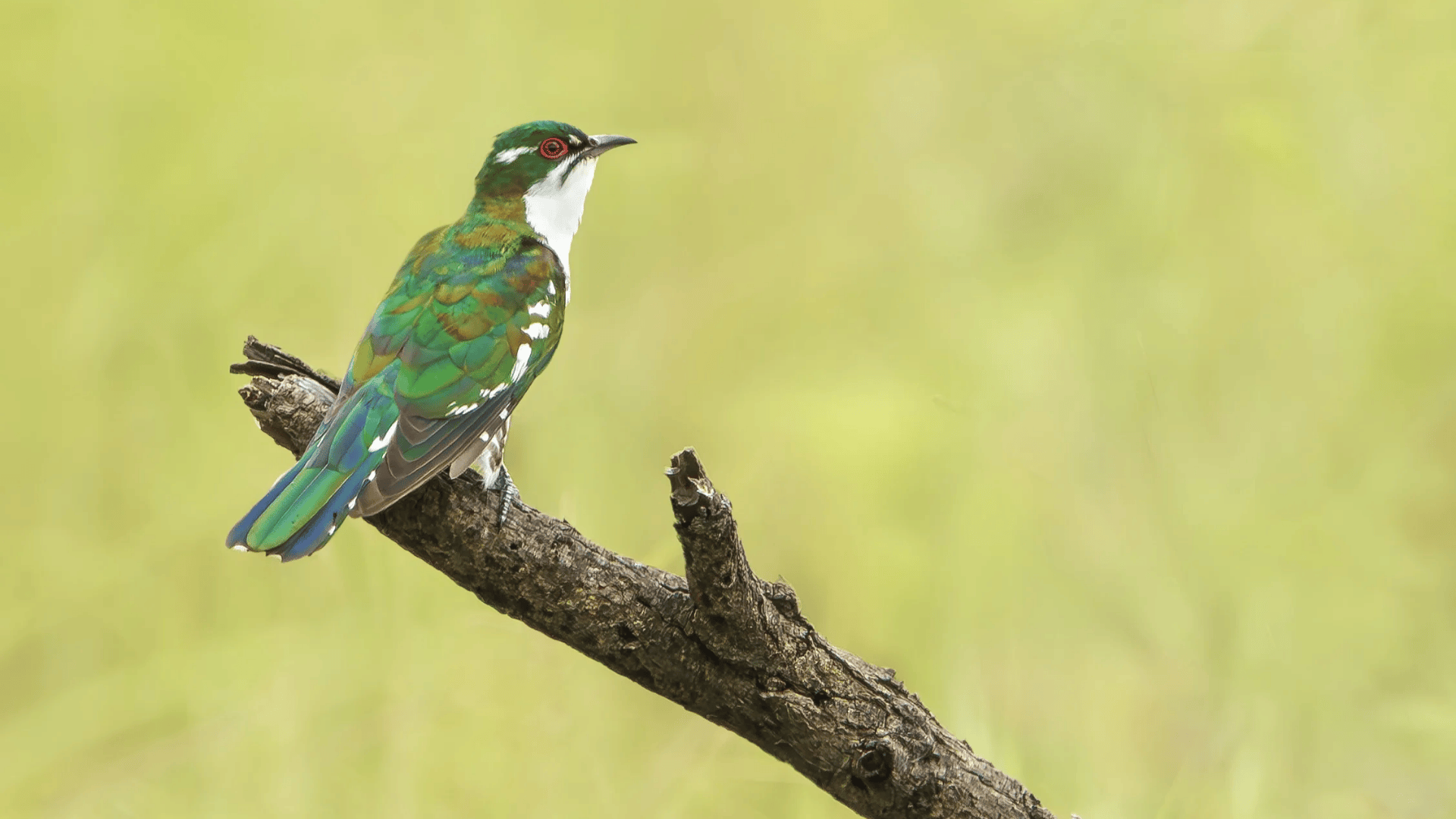
This small cuckoo is about 18–20 cm long, with glossy green upperparts and bold white underparts. Males have a red eye-ring and are more colorful than females.
-
Region of Habitat: Sub-Saharan Africa and parts of the Middle East; prefers savannas and forest edges.
-
Scientific Name:Chrysococcyx caprius
-
Feeding Habits: Primarily insectivorous, especially caterpillars; hunts by moving through tree canopies.
-
What Sound They Make: Repetitive, metallic “dee-dee-deederik” call, which inspired its name.
Fun Facts:
It’s a brood parasite, laying eggs in other birds’ nests. Host birds unknowingly raise the cuckoo’s chick.
12. Downy Woodpecker
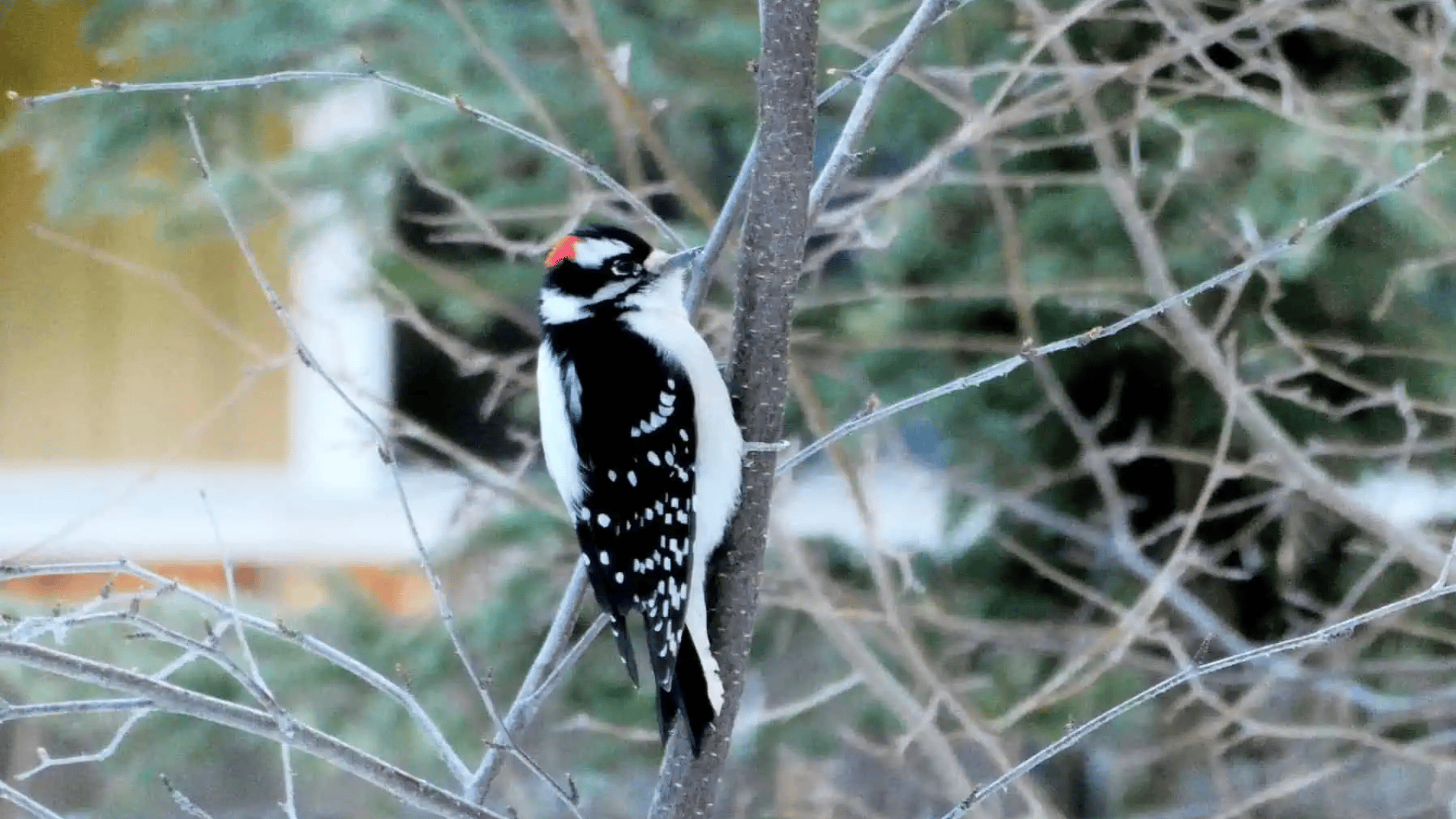
North America’s smallest woodpecker, about 14–17 cm long. It has a black and white checkered pattern, with males featuring a small red patch on the head.
-
Region of Habitat: Widespread across North America; found in forests, parks, and gardens.
-
Scientific Name:Dryobates pubescens
-
Feeding Habits: Feeds on insects, especially beetle larvae; also eats seeds and berries.
-
What Sound They Make: Sharp “pik” call and fast drumming on wood.
Fun Facts:
It uses its stiff tail for support while climbing tree trunks. Frequently visits backyard feeders in winter.
13. Dunlin
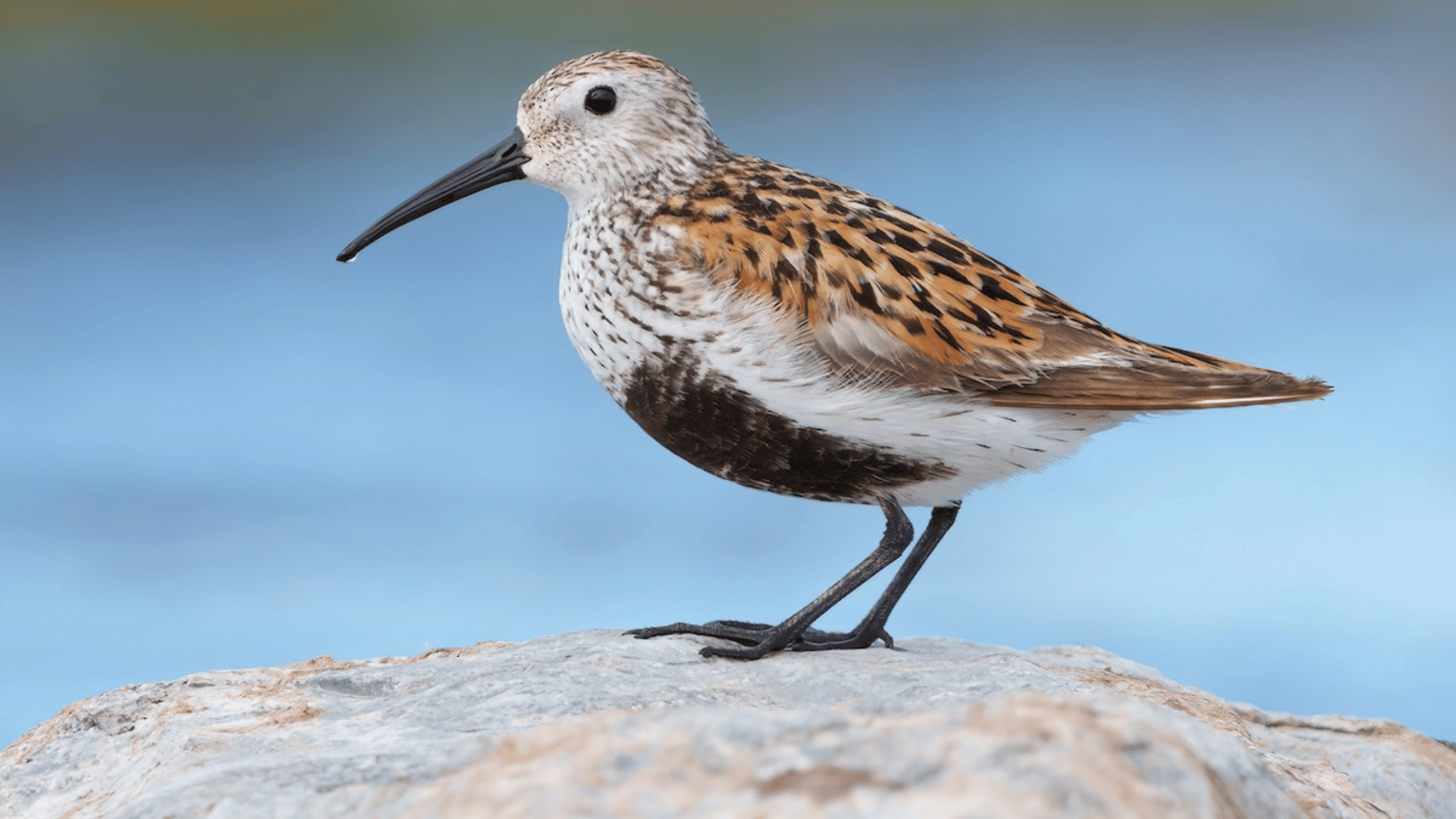
A small, stocky shorebird about 17–21 cm long with a distinctive black belly patch in breeding plumage.
-
Region of Habitat: Breeds in Arctic and sub-Arctic tundra; winters along coastlines around the world.
-
Scientific Name:Calidris alpina
-
Feeding Habits: Feeds on insects, worms, and crustaceans by probing mudflats with its curved bill.
-
What Sound They Make: High-pitched trills and whirring calls, especially in flight.
Fun Facts:
Dunlins migrate in large flocks, forming synchronized patterns in flight. Their black belly patch is only visible in the summer.
14. Dunnock
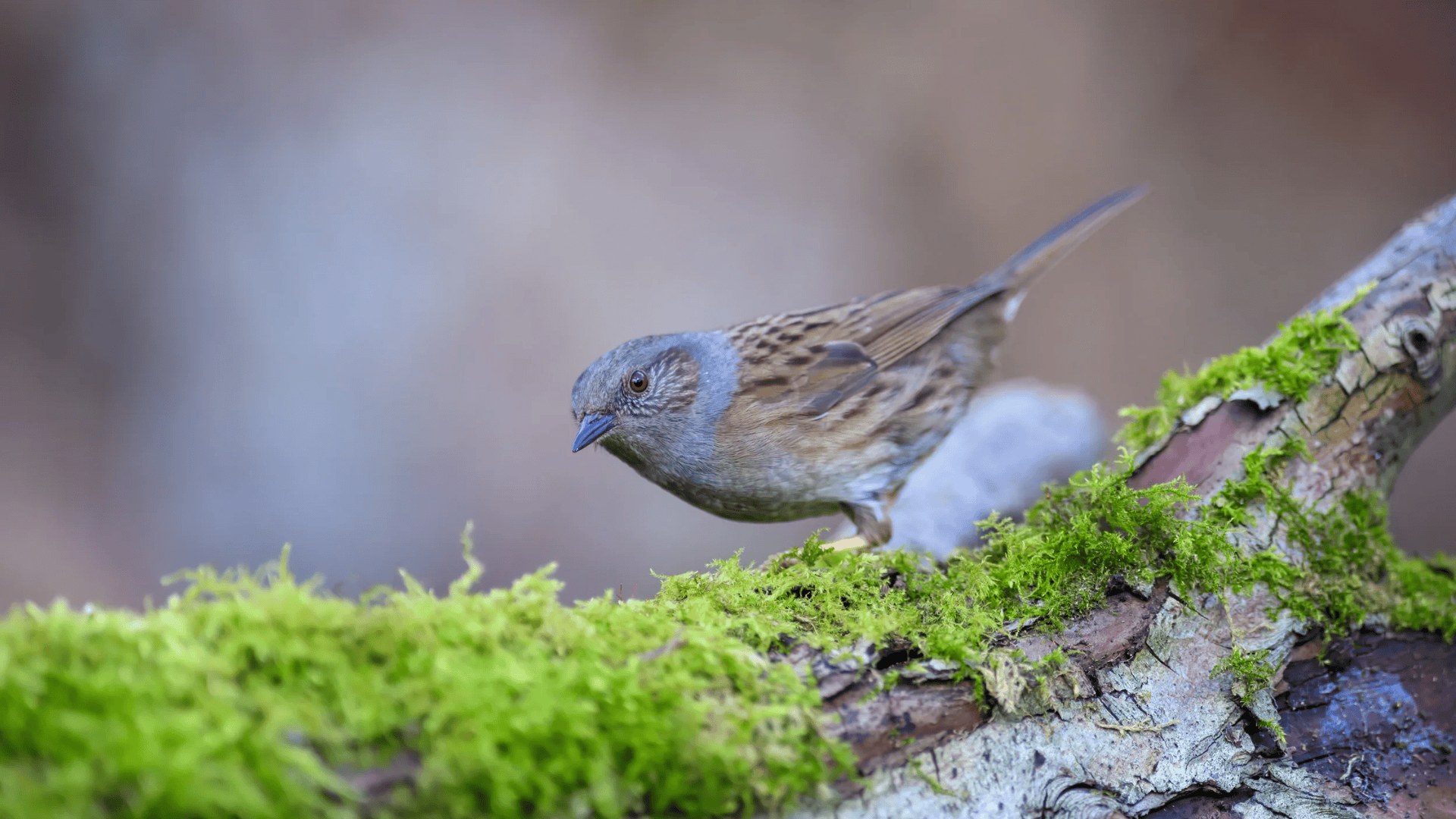
A small, sparrow-sized bird with brown and gray plumage and a thin, sharp bill. About 13–14 cm in length.
-
Region of Habitat: Europe and parts of western Asia; common in woodlands, gardens, and hedgerows.
-
Scientific Name:Prunella modularis
-
Feeding Habits: Eats insects, spiders, and seeds; forages quietly on the ground.
-
What Sound They Make: Thin, high-pitched “tseep” calls and a sweet, warbling song.
Fun Facts:
Dunnocks practice polyandry, where one female may mate with multiple males. Often mistaken for a sparrow due to its size and color.
15. Dusky Warbler
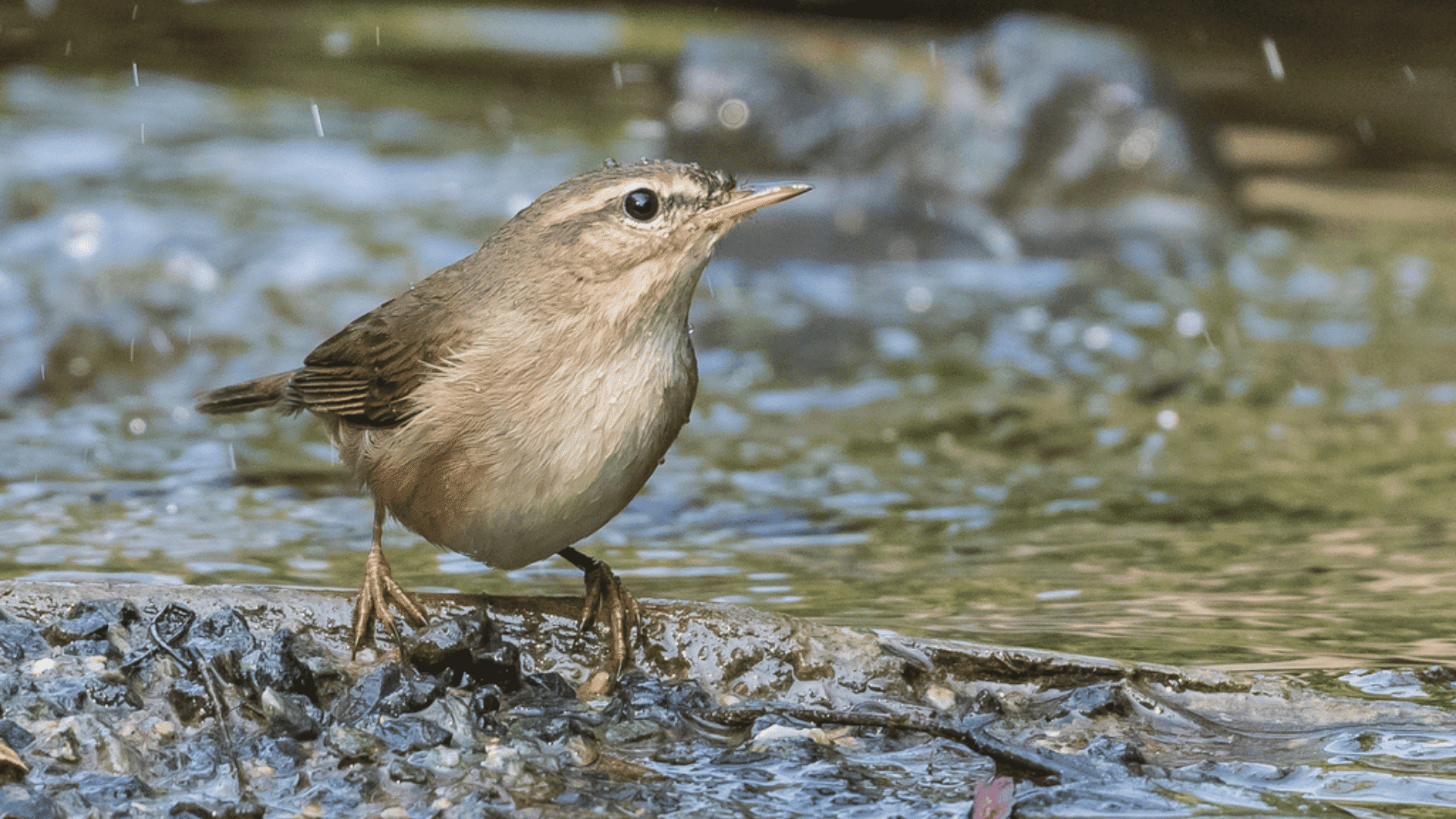
This shy, brown-toned warbler is around 11–13 cm in length. It has a faint eyestripe and prefers staying low in dense cover.
-
Region of Habitat: Breeds in Siberia and northeastern Asia; winters in Southeast Asia.
-
Scientific Name:Phylloscopus fuscatus
-
Feeding Habits: Insectivorous; gleans insects from foliage or occasionally catches them mid-air.
-
What Sound They Make: Harsh “tack” calls and a soft, buzzing song during breeding.
Fun Facts:
Occasionally appears in Europe as a rare vagrant during migration. Very secretive; more often heard than seen.
16. Dusky Thrush
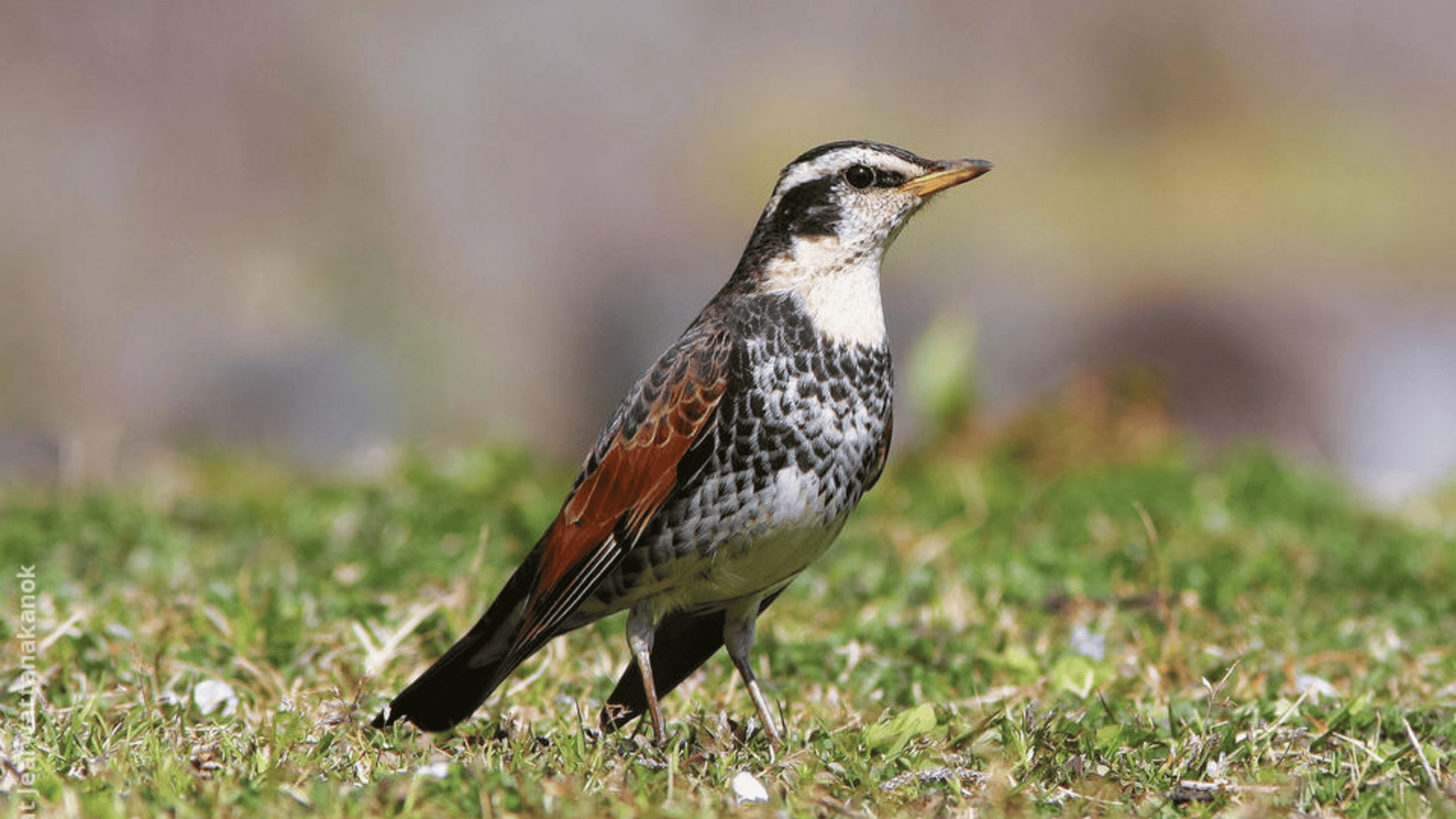
A medium-sized thrush, about 23–25 cm long, with a mix of brown, white, and black plumage and a spotted belly.
-
Region of Habitat: Breeds in Siberia and winters in East Asia, especially Japan and China.
-
Scientific Name:Turdus eunomus
-
Feeding Habits: Feeds on insects, worms, and berries; forages on the ground.
-
What Sound They Make: Harsh “chak” alarm calls; melodious phrases in song.
Fun Facts:
Occasionally spotted in Western Europe during winter storms. Unlike many thrushes, it prefers open areas to forests.
17. Dusky-headed Parakeet
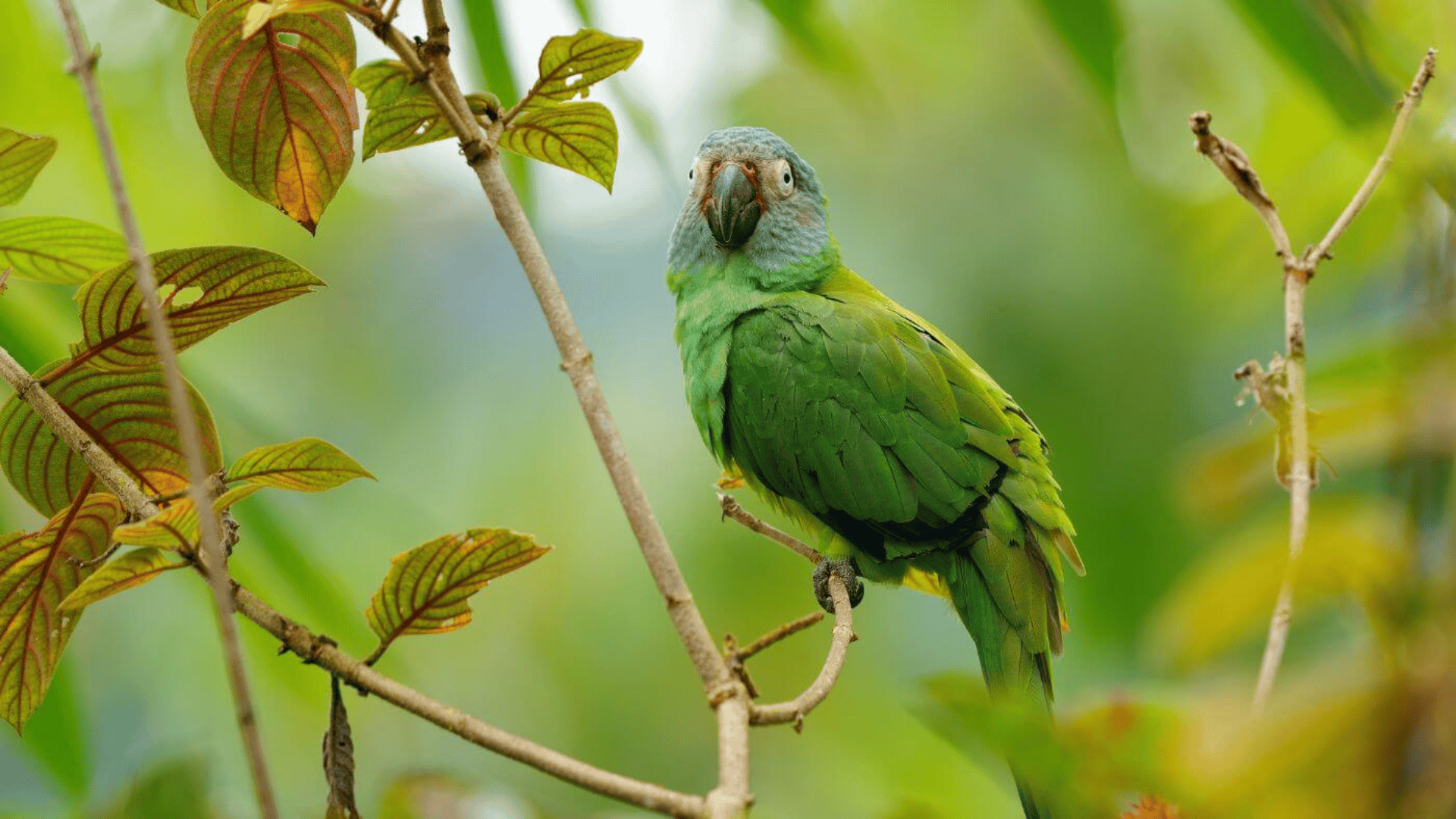
A medium-sized parrot, around 25 cm long, with olive-green plumage and a dusky-gray head.
-
Region of Habitat: Amazon Basin; found in Colombia, Peru, Ecuador, and Brazil.
-
Scientific Name:Aratinga weddellii
-
Feeding Habits: Eats fruits, seeds, and blossoms; often forages in flocks.
-
What Sound They Make: High-pitched screeches and rapid chattering sounds.
Fun Facts:
Very social; often seen in noisy groups. Known to form strong pair bonds.
18. Dusky-legged Guan
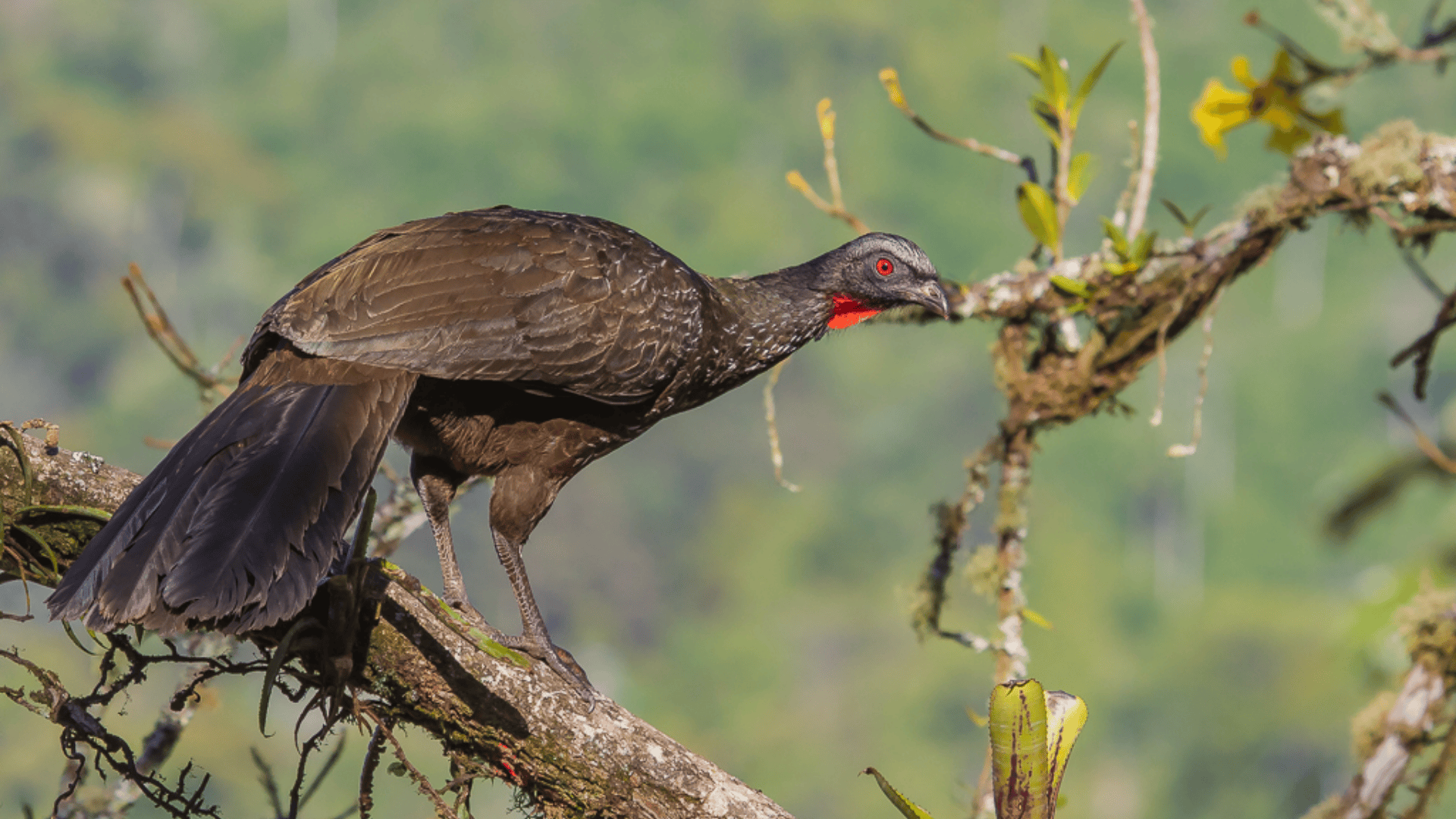
A turkey-sized bird with dark brown plumage and a feathered crest. Grows up to 65–75 cm in length.
-
Region of Habitat: Atlantic forests of Brazil, Argentina, and Paraguay.
-
Scientific Name:Penelope obscura
-
Feeding Habits: Primarily frugivorous; also eats seeds and leaves.
-
What Sound They Make: Loud, honking calls and booming displays.
Fun Facts:
Plays a key role in seed dispersal in tropical forests. Threatened by habitat loss and hunting in some areas.
19. Dusky Moorhen
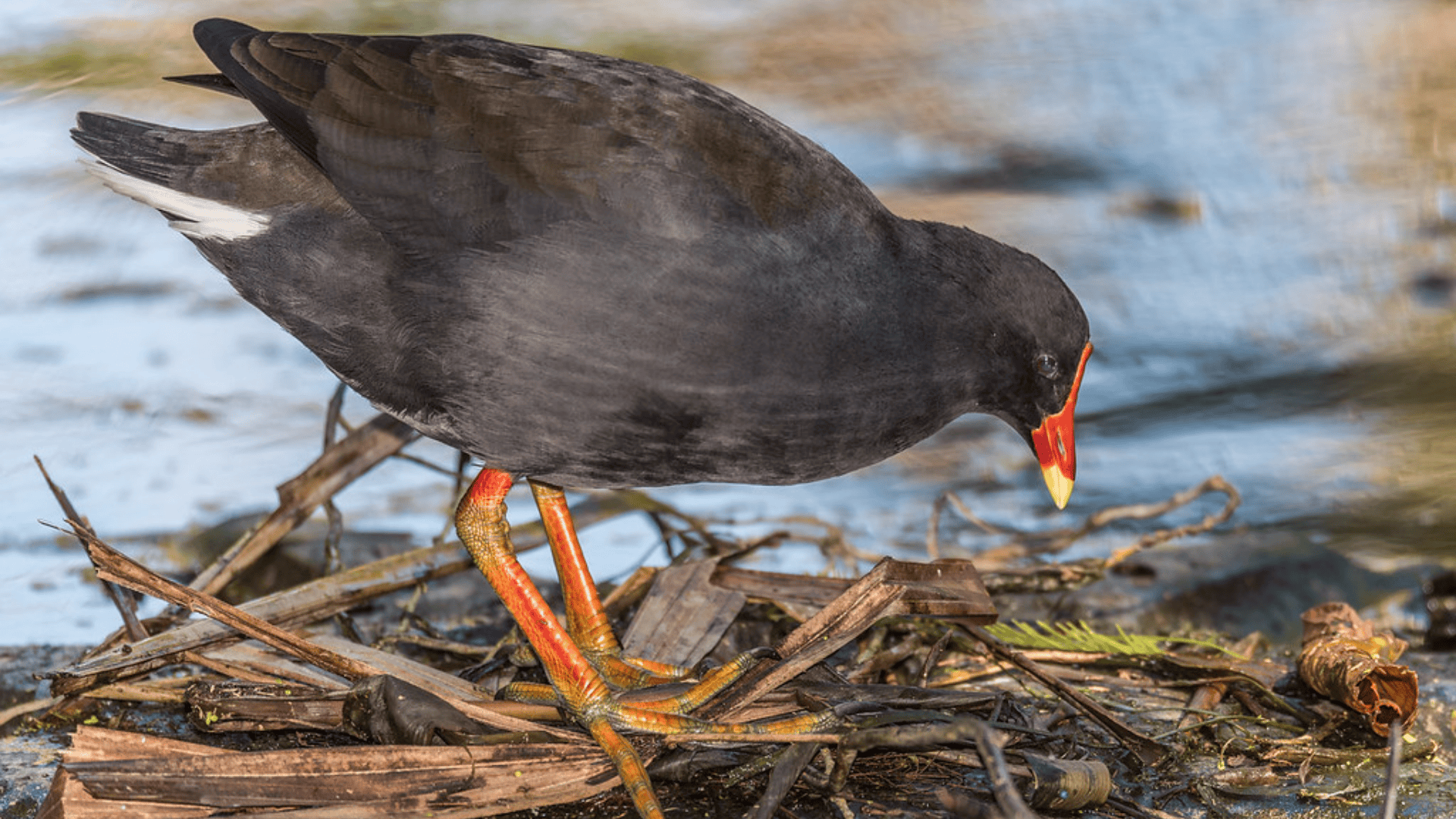
A medium-sized bird with dark grey-black plumage and a red frontal shield. Measures around 30–38 cm in length.
-
Region of Habitat: Wetlands of Australia, New Guinea, and nearby islands.
-
Scientific Name:Gallinula tenebrosa
-
Feeding Habits: Omnivorous; feeds on aquatic vegetation, insects, and small animals.
-
What Sound They Make: Series of loud, gurgling squawks and clicks.
Fun Facts:
Often seen swimming or walking across lily pads. Builds floating nests among reeds.
20. Dusky Lory
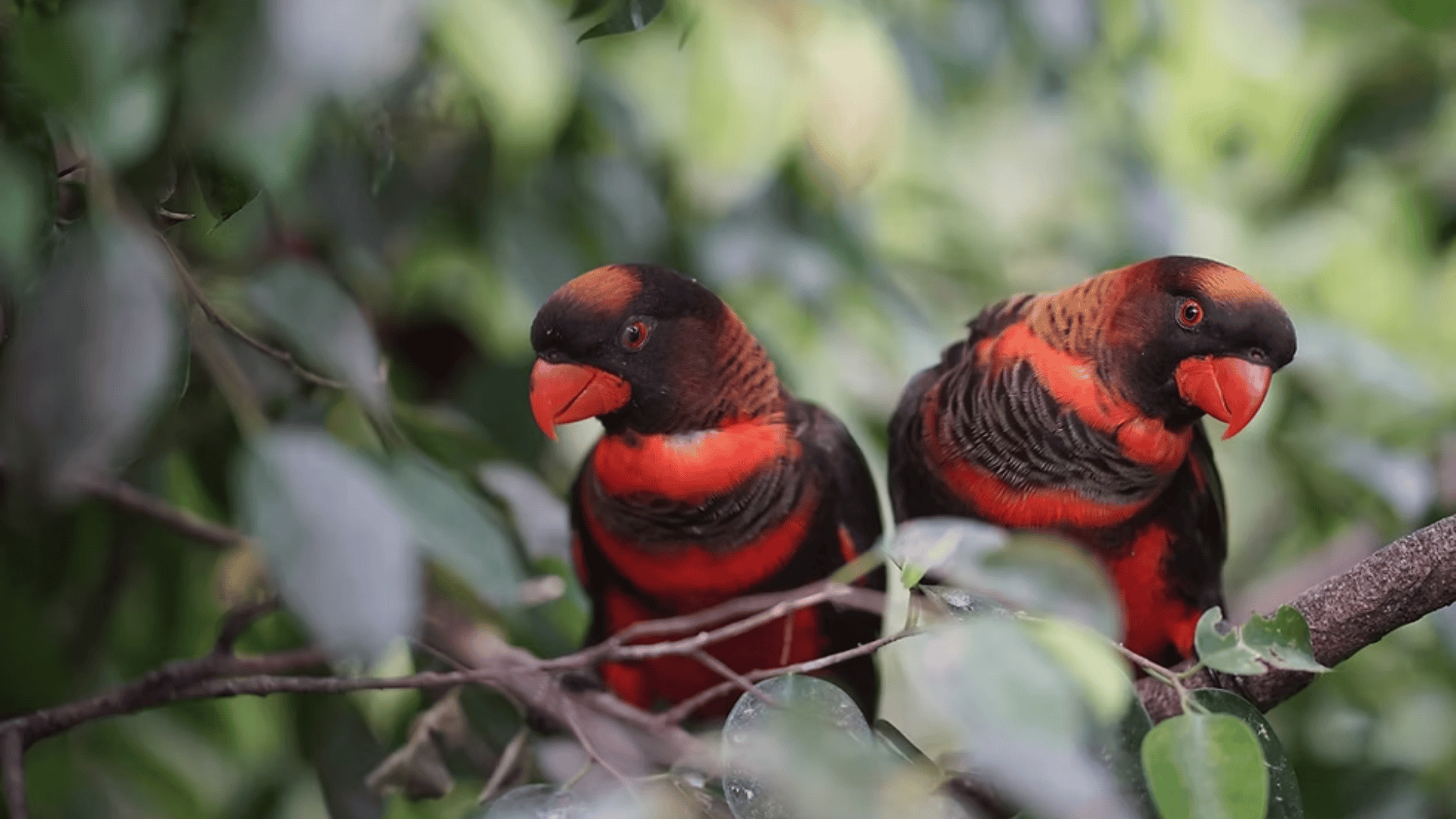
A colorful parrot about 25 cm long, with maroon and black plumage and bright orange beak and eyes.
-
Region of Habitat: Lowland forests of New Guinea and surrounding islands.
-
Scientific Name:Pseudeos fuscata
-
Feeding Habits: Nectarivorous and frugivorous; feeds on flowers, nectar, and soft fruits.
-
What Sound They Make: High-pitched, chattering vocalizations and screeches.
Fun Facts:
Uses its brush-tipped tongue to extract nectar. Known for playful, social behavior in flocks.
Other D-Birds You Must Include in Your Birdwatching Journal
21. D’Arnaud’s Barbet
22. D’Orbigny’s Chat-tyrant
23. Dagua Thrush
24. Dalat Bush Warbler
25. Dalat Shrike-babbler
26. Damar Flycatcher
27. Damara Red-billed Hornbill
28. Dambo Cisticola
29. Dapple-throat
30. Dark Batis
31. Dark Hawk-cuckoo
32. Dark Pewee
33. Dark-backed Imperial Pigeon
34. Dark-backed Sibia
35. Dark-backed Weaver
36. Dark-backed Wood Quail
37. Dark-bellied Cinclodes
38. Dark-billed Cuckoo
39. Dark-breasted Rosefinch
40. Dark-breasted Spinetail
41. Dark-capped Bulbul
42. Dark-eared Myza
43. Dark-eyed Junco
44. Dark-eyed White-eye
45. Dark-faced Ground Tyrant
46. Dark-fronted Babbler
47. Dark-necked Tailorbird
48. Dark-rumped Rosefinch
49. Dark-rumped Swift
50. Dark-sided Flycatcher
51. Dark-sided Thrush
52. Dark-throated Oriole
53. Dark-throated Seedeater
54. Dark-winged Canastero
55. Dark-winged Miner
56. Dark-winged Trumpeter
57. Darwin’s Flycatcher
58. Darwin’s Nothura
59. Darwin’s Rhea
60. Daurian Jackdaw
61. Daurian Partridge
62. Daurian Starling
63. David’s Fulvetta
64. Davison’s Leaf Warbler
65. De Filippi’s Petrel
66. Dead Sea Sparrow
67. Deignan’s Prinia
68. Delalande’s Coua
69. Delta Amacuro Softtail
70. Demoiselle Crane
71. Denham’s Bustard
72. Des Murs’s Wiretail
73. Desert Cisticola
74. Desert Finch
75. Desert Owl
76. Desert Sparrow
77. Desert Whitethroat
78. Desertas Petrel
79. Diademed Amazon
80. Diademed Sandpiper-plover
81. Diademed Tanager
82. Diademed Tapaculo
83. Diamantina Tapaculo
84. Diamond Firetail
85. Diard’s Trogon
86. Dickinson’s Kestrel
87. Dieffenbach’s Rail
88. Dimorphic Dwarf Kingfisher
89. Dimorphic Egret
90. Dimorphic Fantail
91. Dinelli’s Doradito
92. Dja River Scrub Warbler
93. Djibouti Spurfowl
94. Dodson’s Bulbul
95. Doherty’s Bushshrike
96. Dohrn’s Warbler
97. Dolphin Gull
98. Donaldson Smith’s Nightjar
99. Donaldson Smith’s Sparrow-weaver
100. Doria’s Goshawk
101. Dorst’s Cisticola
102. Dot-backed Antbird
103. Dot-eared Coquette
104. Dot-fronted Woodpecker
105. Dot-winged Antwren
106. Dot-winged Crake
107. Dotted Tanager
108. Double-banded Courser
109. Double-banded Greytail
110. Double-banded Plover
111. Double-banded Pygmy Tyrant
112. Double-banded Sandgrouse
113. Double-barred Finch
114. Double-collared Crescentchest
115. Double-collared Seedeater
116. Double-crested Cormorant
117. Double-eyed Fig Parrot
118. Double-spurred Spurfowl
119. Double-striped Thick-knee
120. Double-toothed Barbet
121. Double-toothed Kite
122. Doubleday’s Hummingbird
123. Drab Hemispingus
124. Drab Myzomela
125. Drab Seedeater
126. Drab Swiftlet
127. Drab Water Tyrant
128. Drab Whistler
129. Drab-breasted Bamboo Tyrant
130. Drakensberg Prinia
131. Drakensberg Rockjumper
132. Drakensberg Siskin
133. Drongo Fantail
134. Dubois’s Seedeater
135. Duchess Lorikeet
136. Dugand’s Antwren
137. Duida Grass Finch
138. Duida Woodcreeper
139. Dulit Frogmouth
140. Dull-blue Flycatcher
141. Dull-colored Grassquit
142. Dull-mantled Antbird
143. Dune Lark
144. Dunn’s Lark
145. Dunnock
146. Dupont’s Lark
147. Dusky Antbird
148. Dusky Babbler
149. Dusky Broadbill
150. Dusky Bush Tanager
151. Dusky Crag Martin
152. Dusky Crested Flycatcher
153. Dusky Crimsonwing
154. Dusky Eagle-owl
155. Dusky Friarbird
156. Dusky Fulvetta
157. Dusky Gerygone
158. Dusky Grasswren
159. Dusky Grouse
160. Dusky Hummingbird
161. Dusky Indigobird
162. Dusky Lark
163. Dusky Leaftosser
164. Dusky Long-tailed Cuckoo
165. Dusky Megapode
166. Dusky Moorhen
167. Dusky Munia
168. Dusky Myzomela
169. Dusky Nightjar
170. Dusky Parrot
171. Dusky Pigeon
172. Dusky Piha
173. Dusky Purpletuft
174. Dusky Robin
175. Dusky Spinetail
176. Dusky Starfrontlet
177. Dusky Sunbird
178. Dusky Tapaculo
179. Dusky Tetraka
180. Dusky Tit
181. Dusky Turtle Dove
182. Dusky Twinspot
183. Dusky White-eye
184. Dusky Woodswallow
185. Dusky-backed Jacamar
186. Dusky-billed Parrotlet
187. Dusky-blue Flycatcher
188. Dusky-brown Oriole
189. Dusky-capped Flycatcher
190. Dusky-capped Greenlet
191. Dusky-chested Flycatcher
192. Dusky-faced Tanager
193. Dusky-green Oropendola
194. Dusky-headed Brushfinch
195. Dusky-headed Parakeet
196. Dusky-tailed Antbird
197. Dusky-tailed Canastero
198. Dusky-tailed Flatbill
199. Dusky-throated Antshrike
200. Dusky-throated Hermit
201. Dwarf Bittern
202. Dwarf Cassowary
203. Dwarf Cuckoo
204. Dwarf Fruit Dove
205. Dwarf Honeyguide
206. Dwarf Jay
207. Dwarf Koel
208. Dwarf Longbill
209. Dwarf Sparrowhawk
210. Dwarf Tinamou
211. Dwarf Tyrant-manakin
212. Dwarf Vireo
213. Dybowski’s Twinspot
Wrapping It Up!
From the towering Dalmatian Pelican to the tiny Diamond Dove, these species showcase nature’s incredible adaptability across varied habitats and ecological niches.
Many of these birds feature remarkable adaptations – from the Dusky Warbler’s secretive nature to the Desert Wheatear’s ability to thrive in harsh conditions.
We encourage you to continue exploring the world of birds, perhaps by observing some of these distinctive species in their natural habitats or supporting conservation efforts.
If you’re interested in more informative animal and wildlife content, feel free to click here and explore other blogs that you might enjoy!




